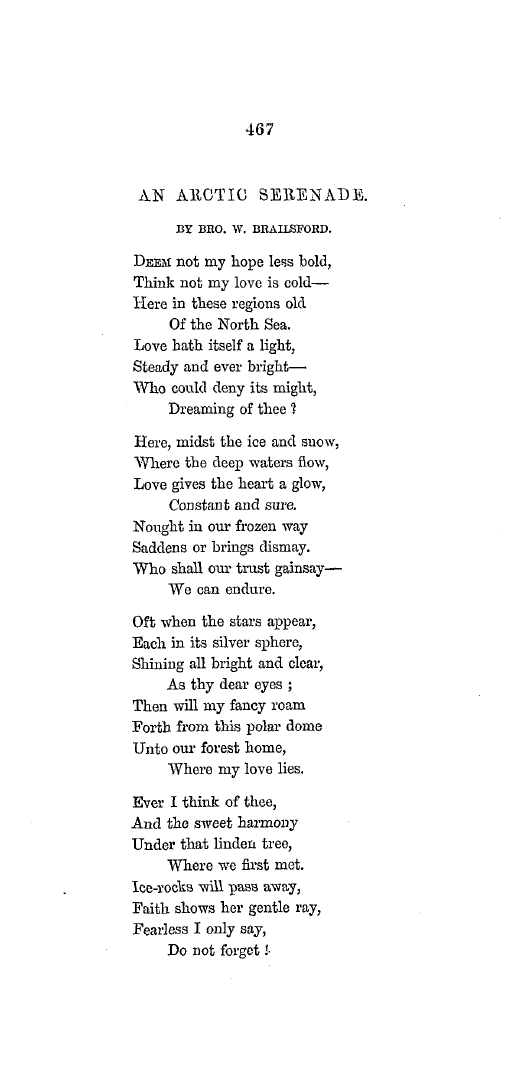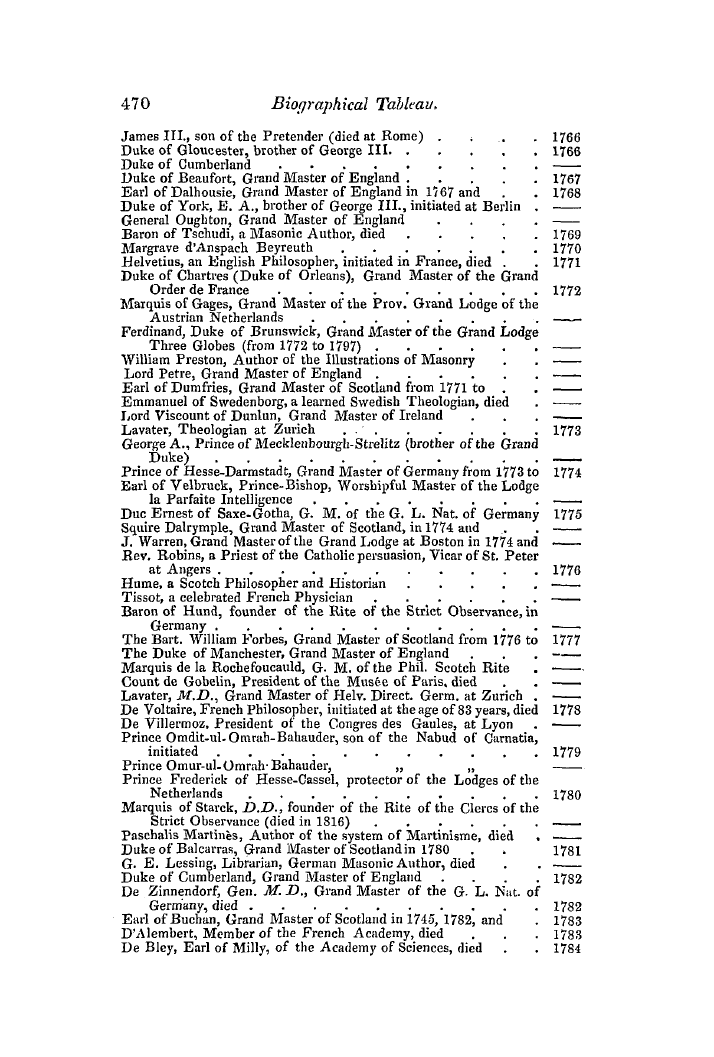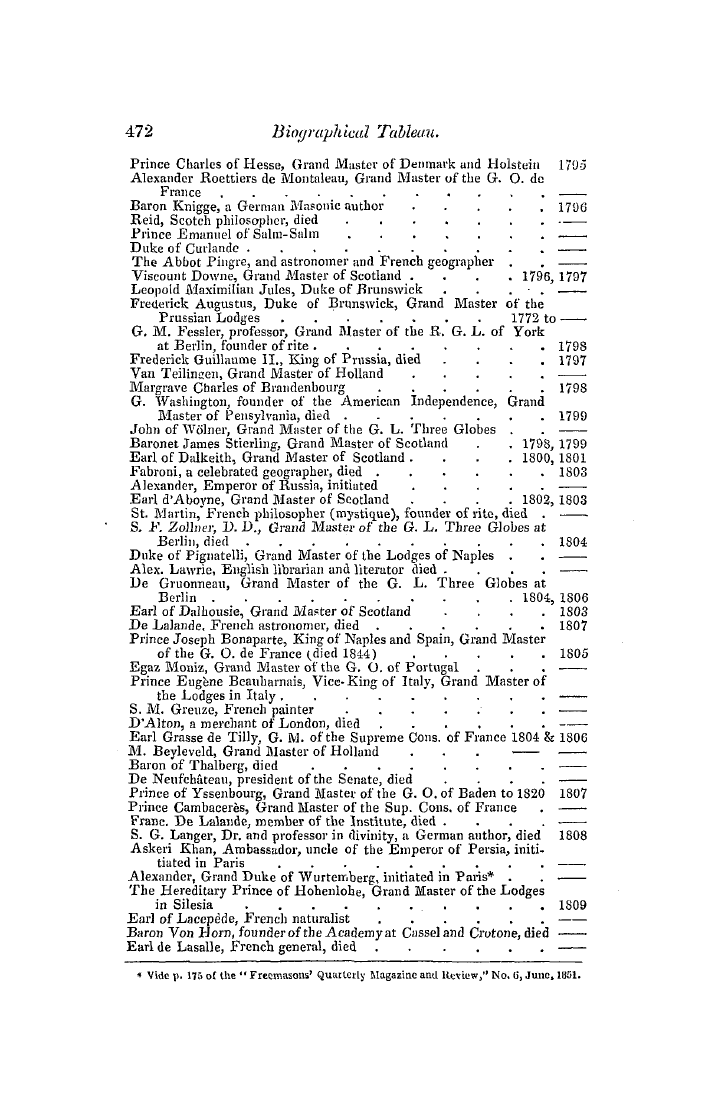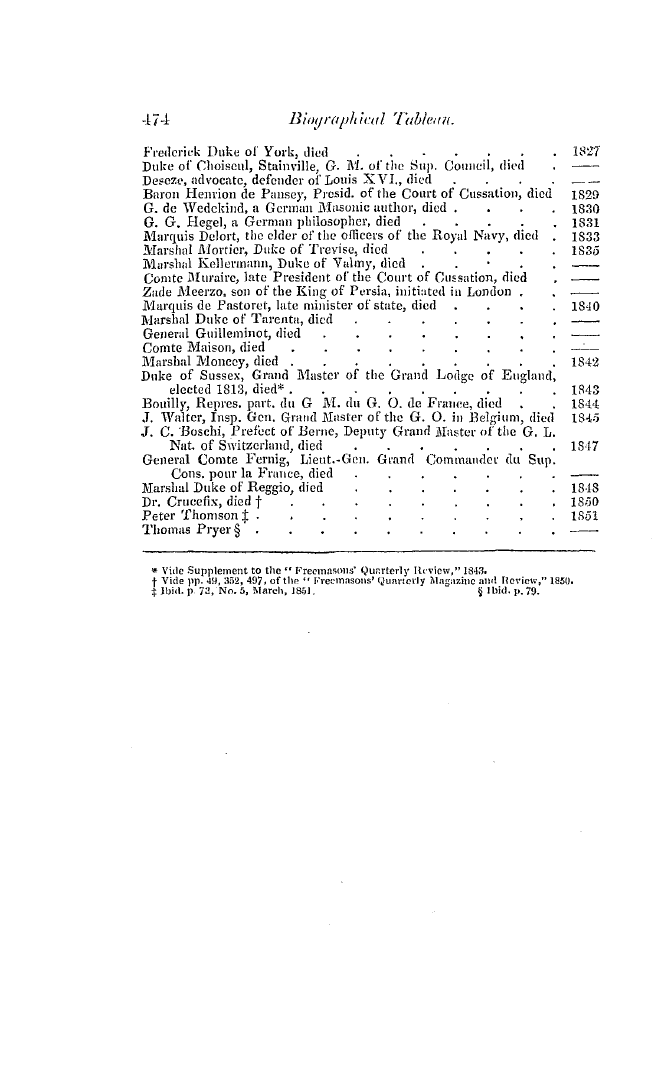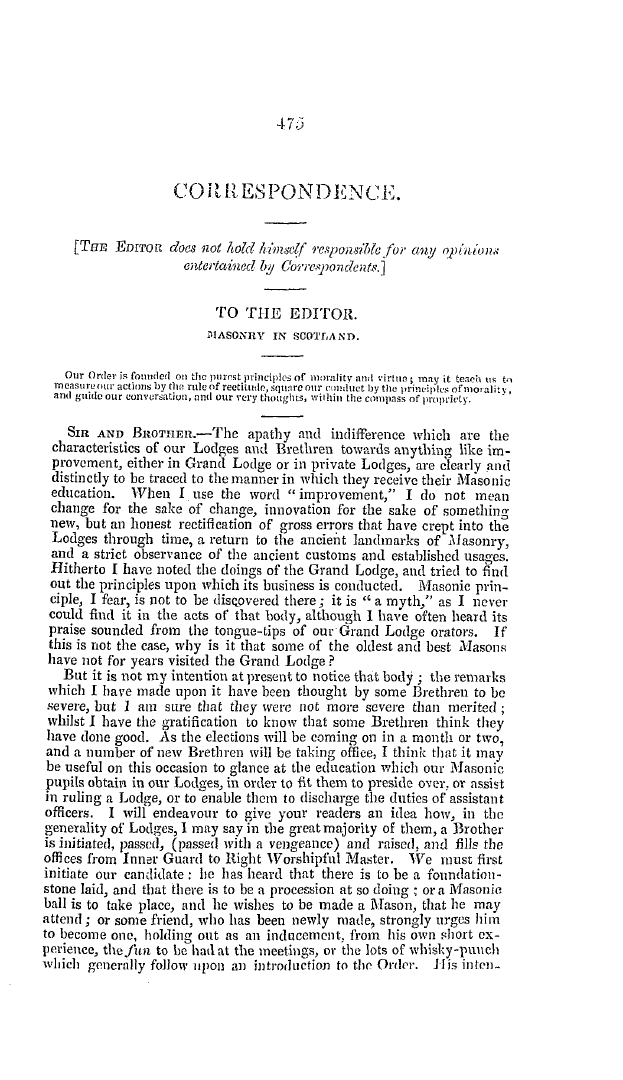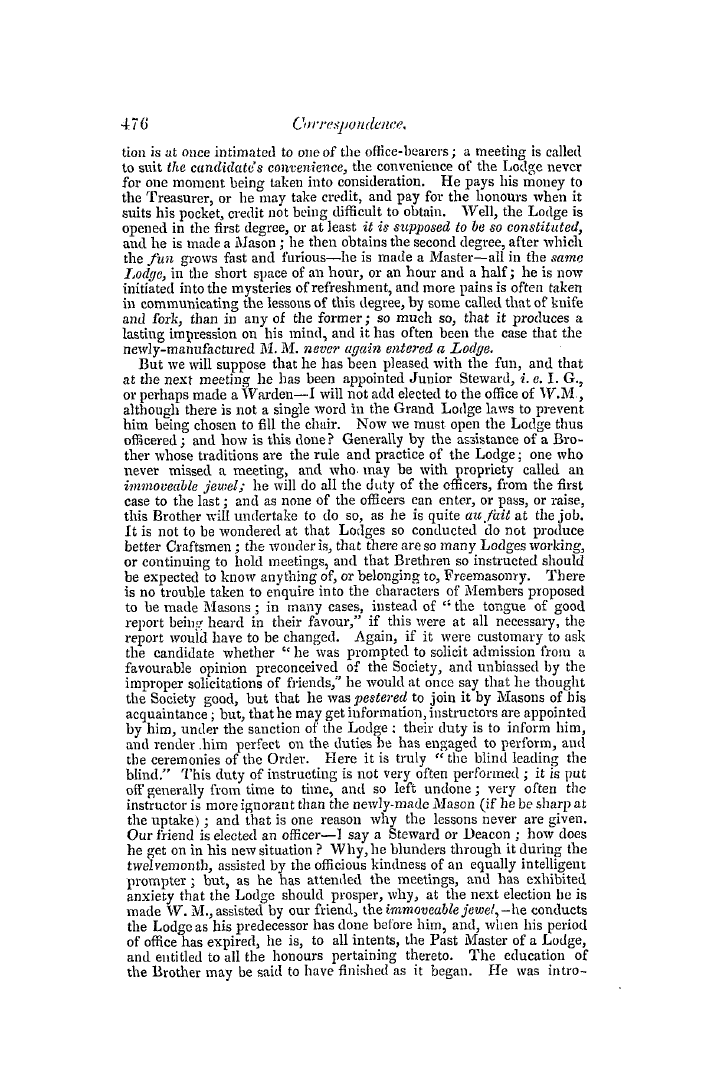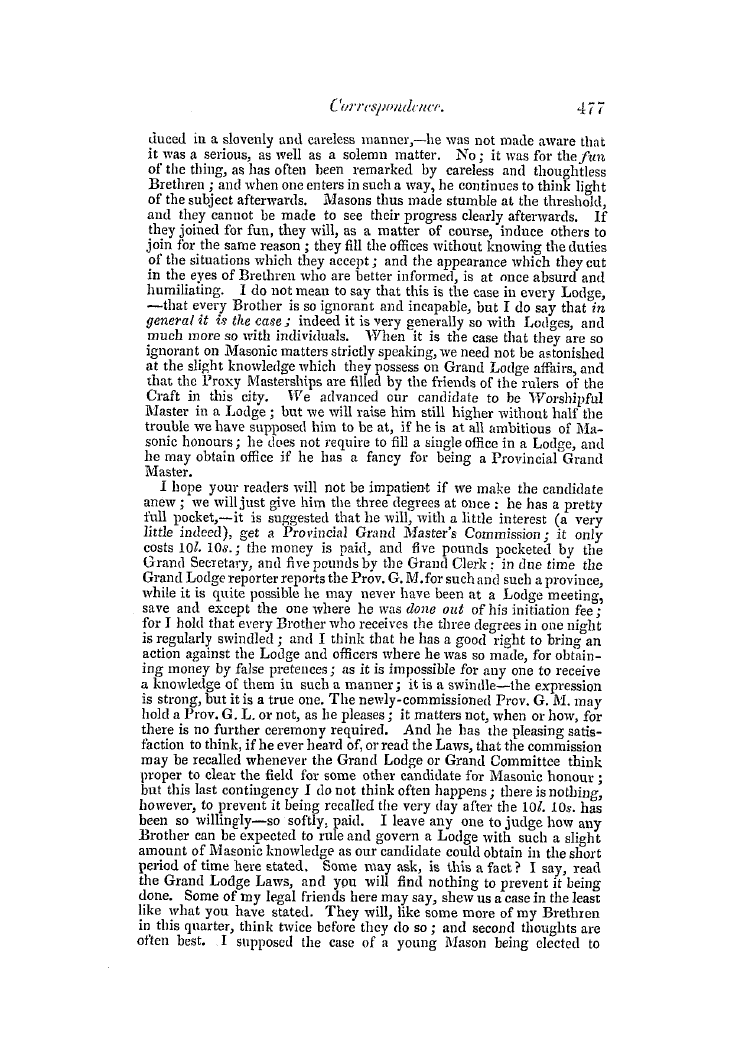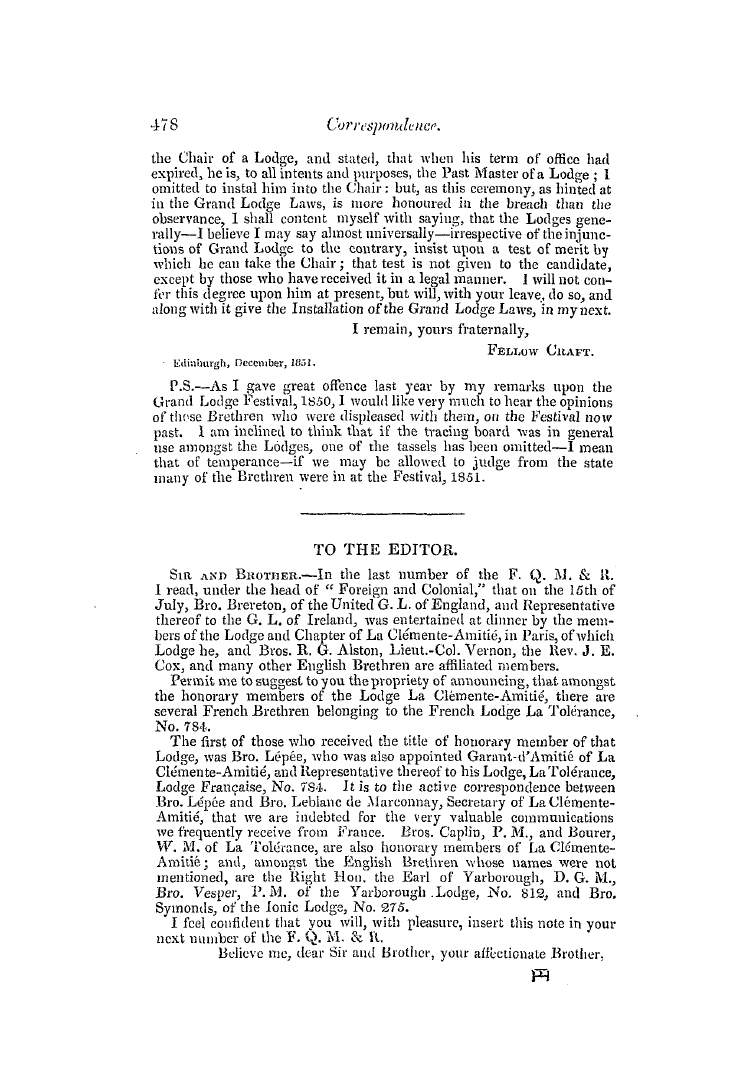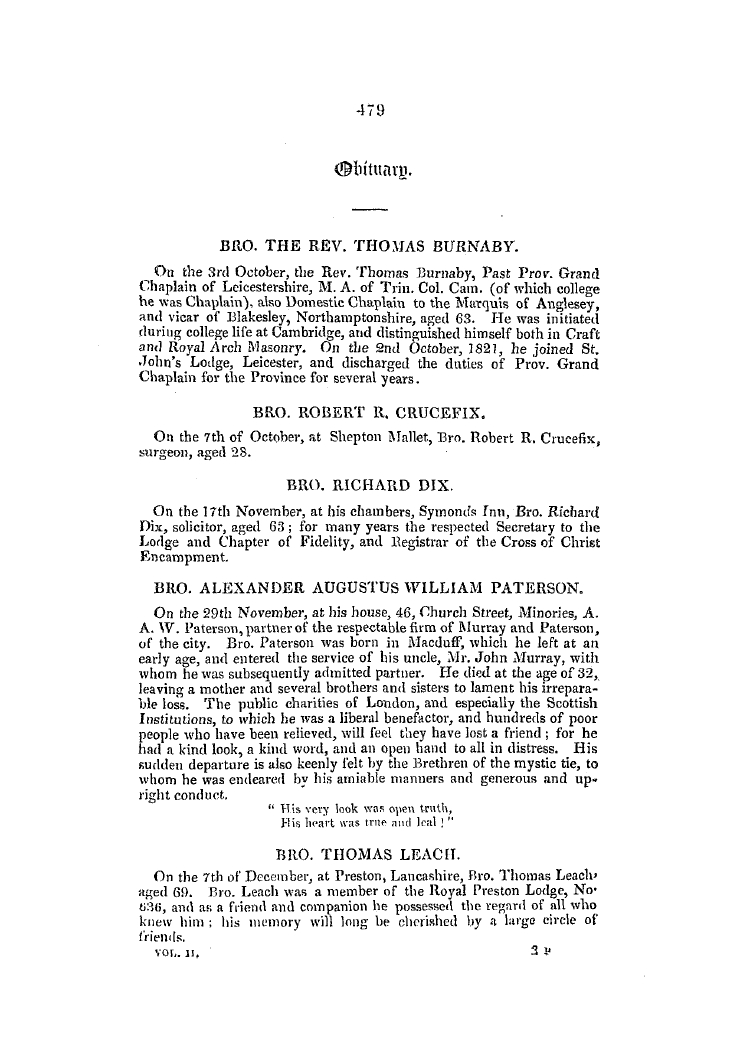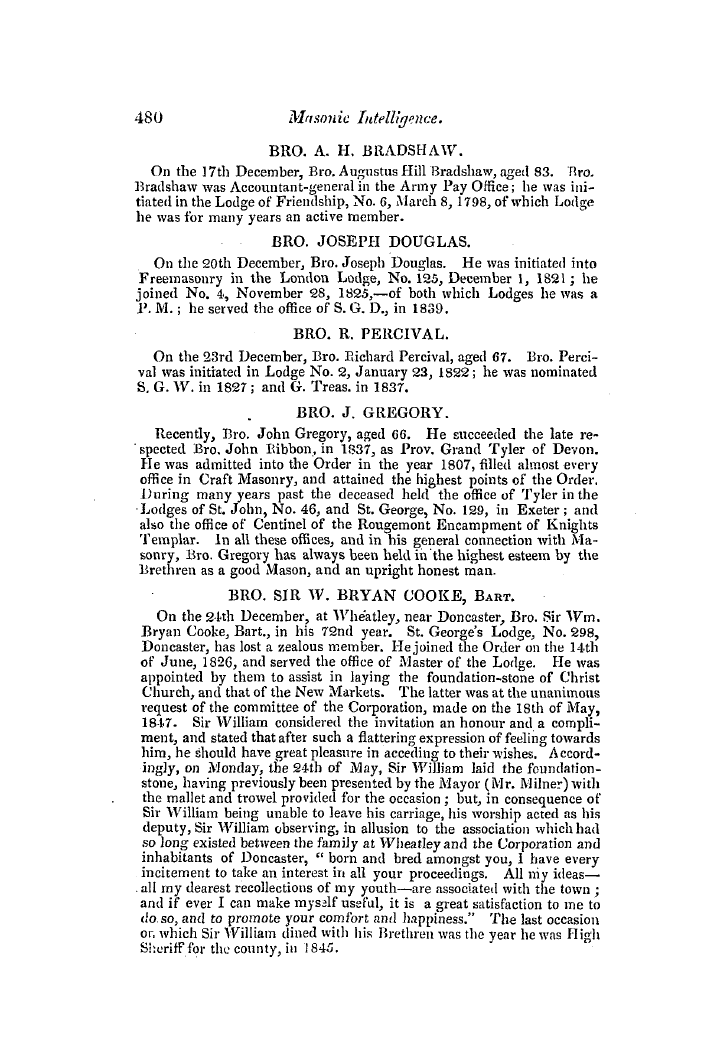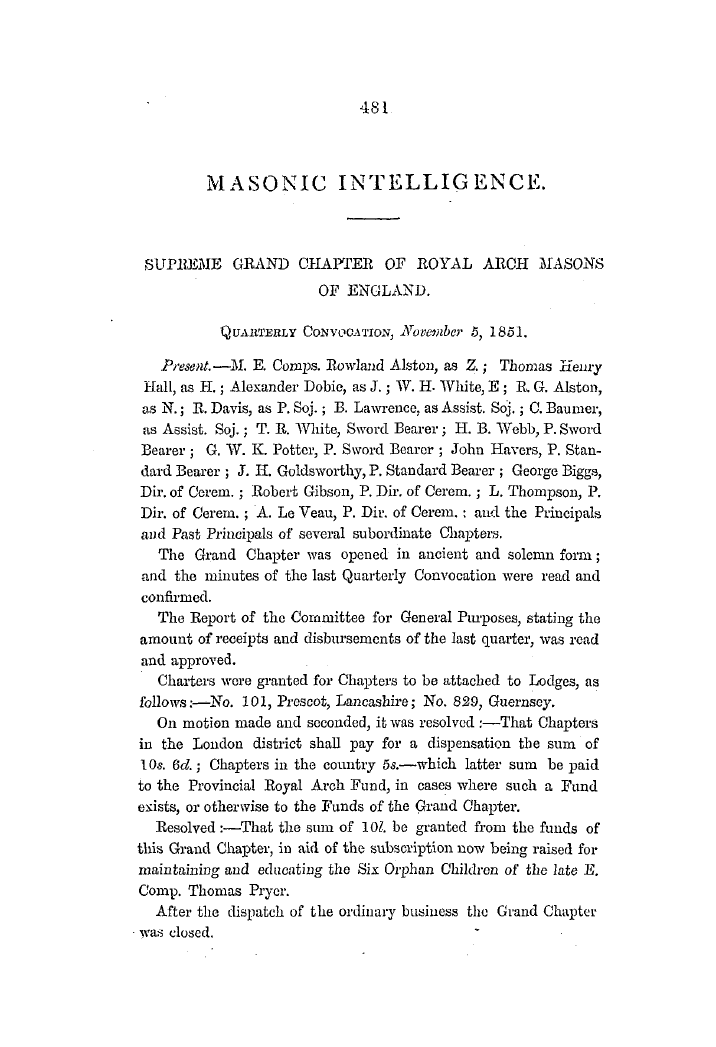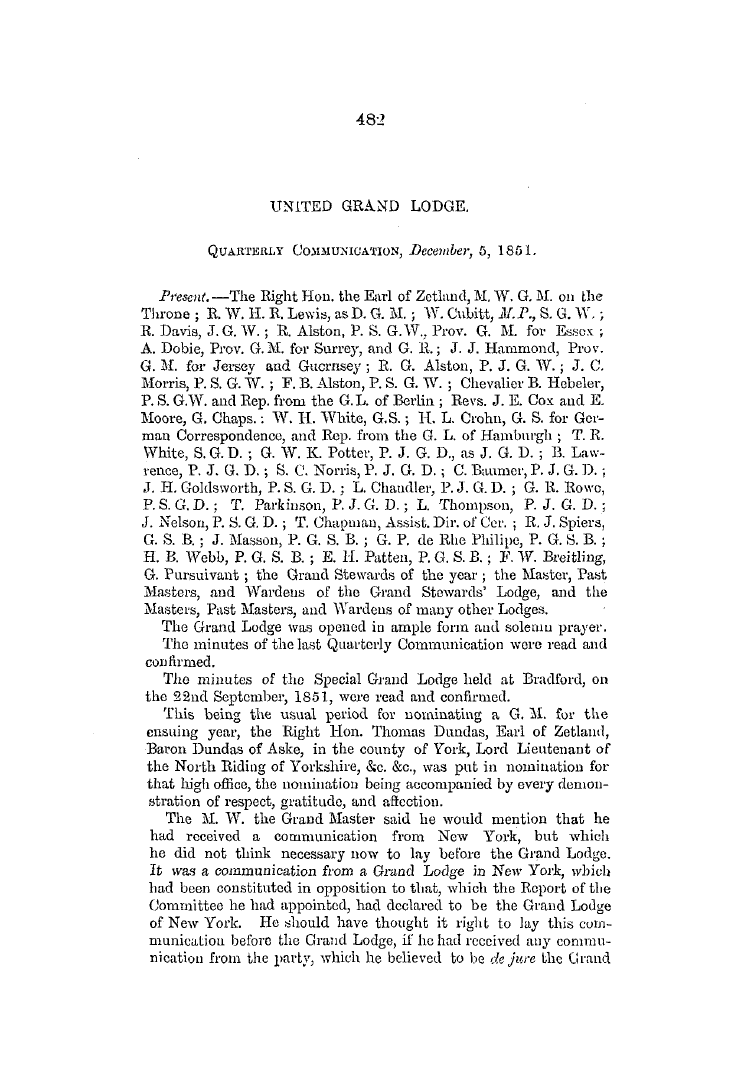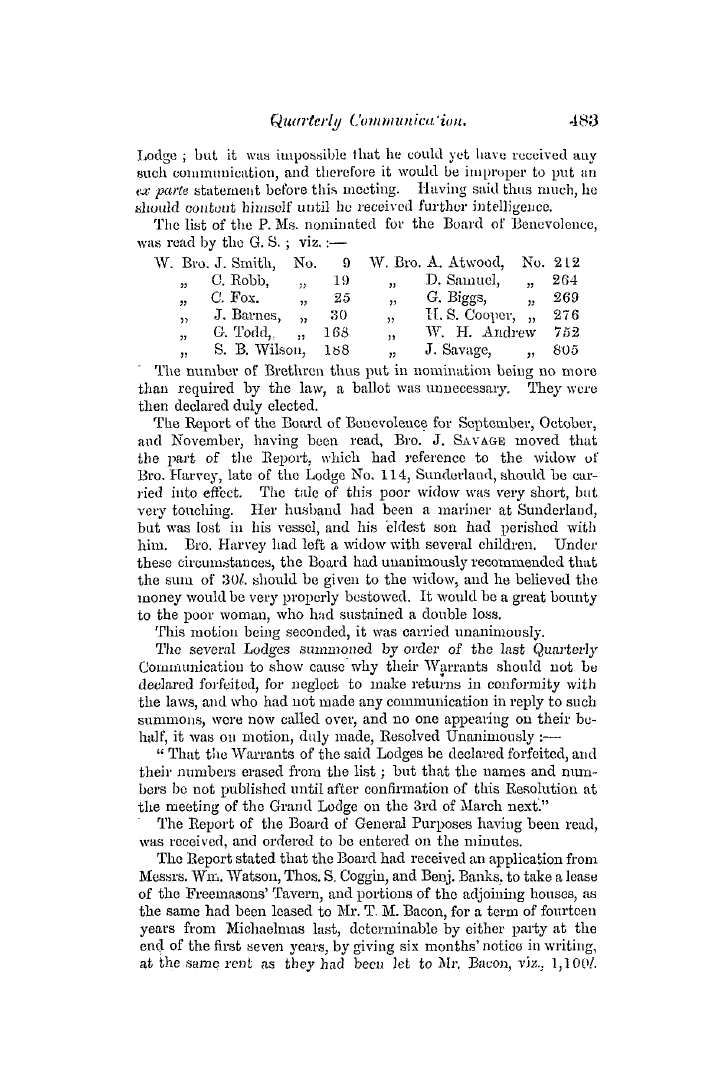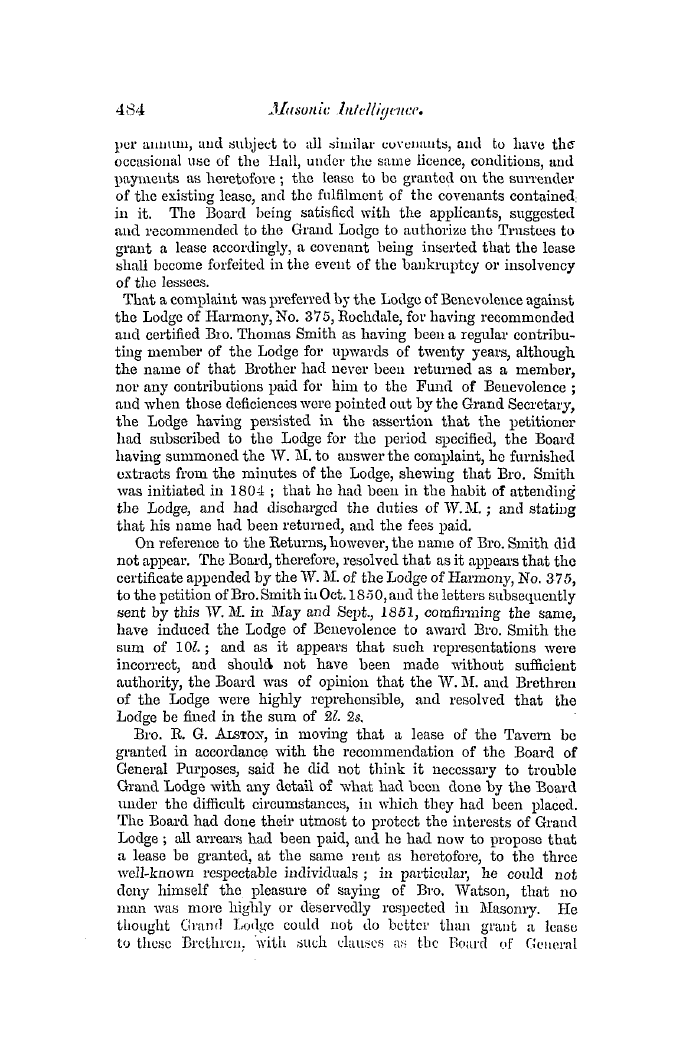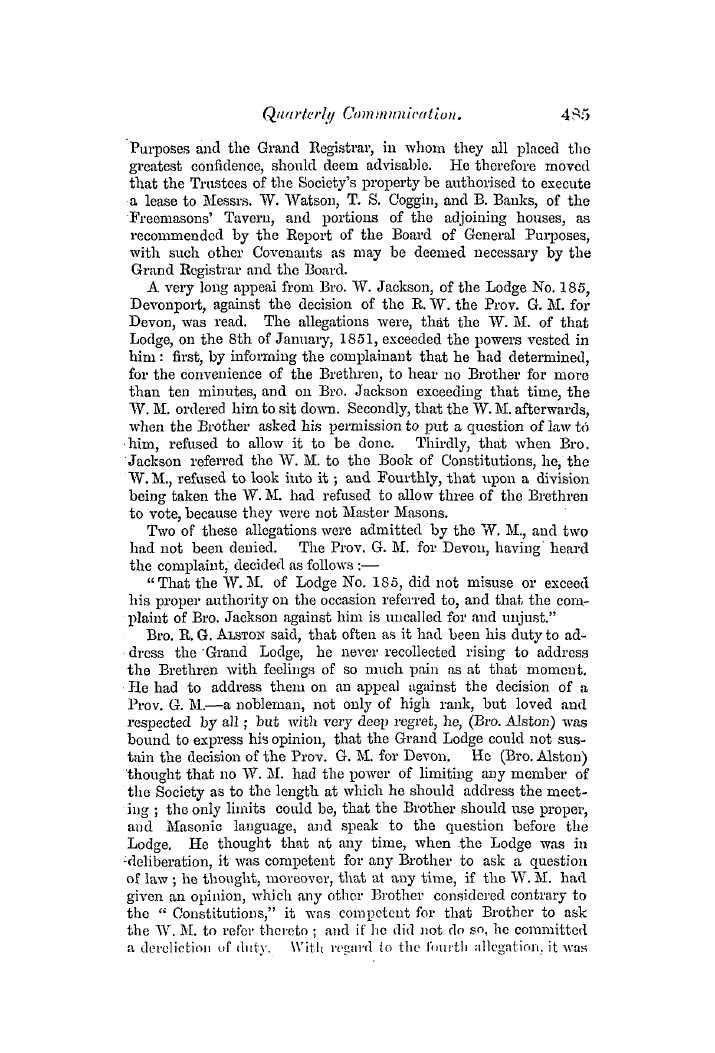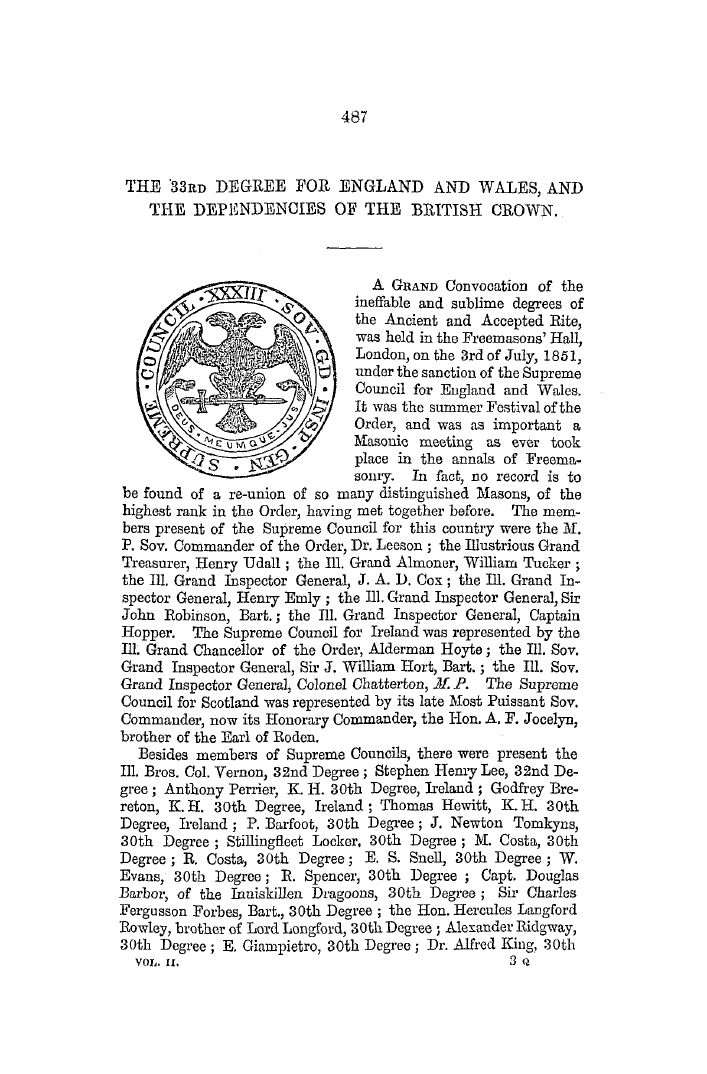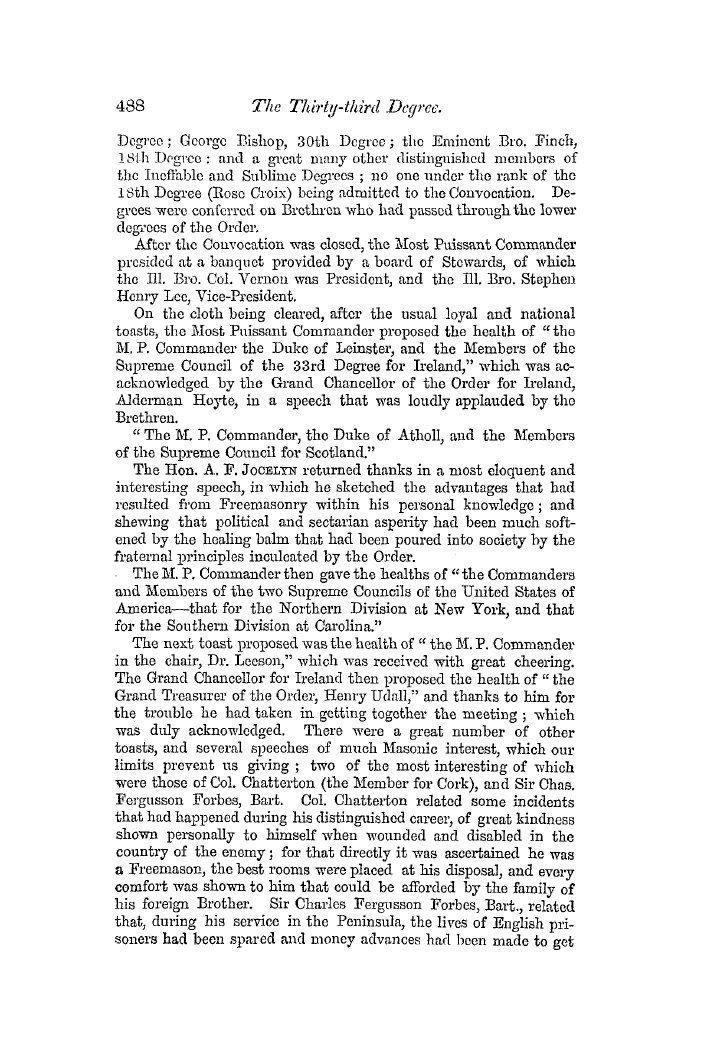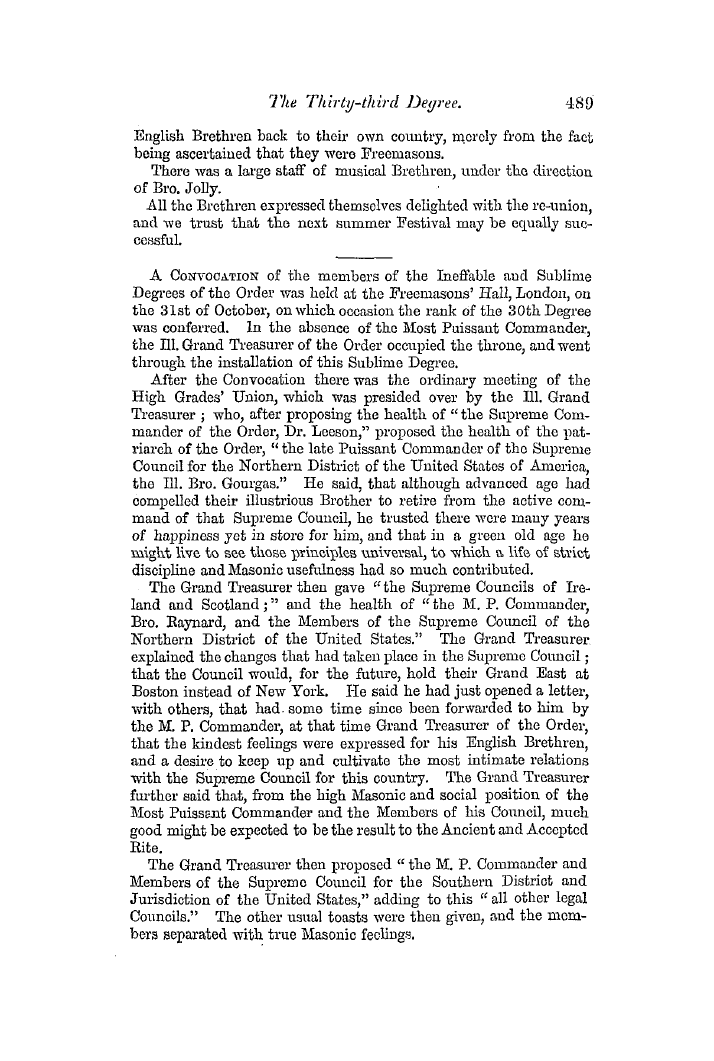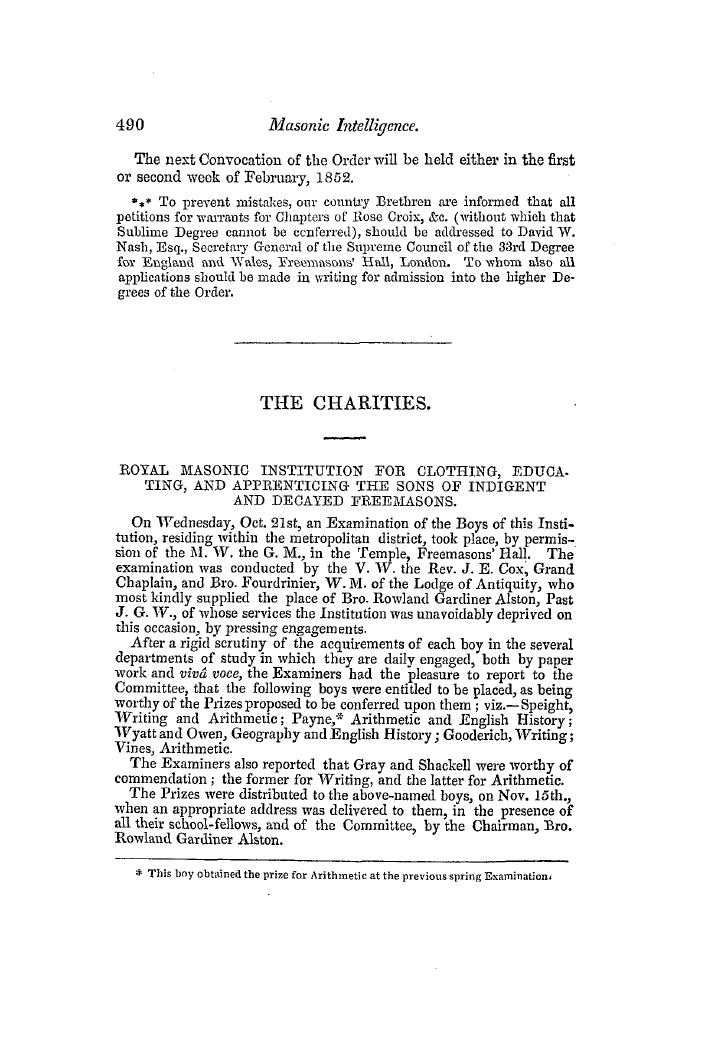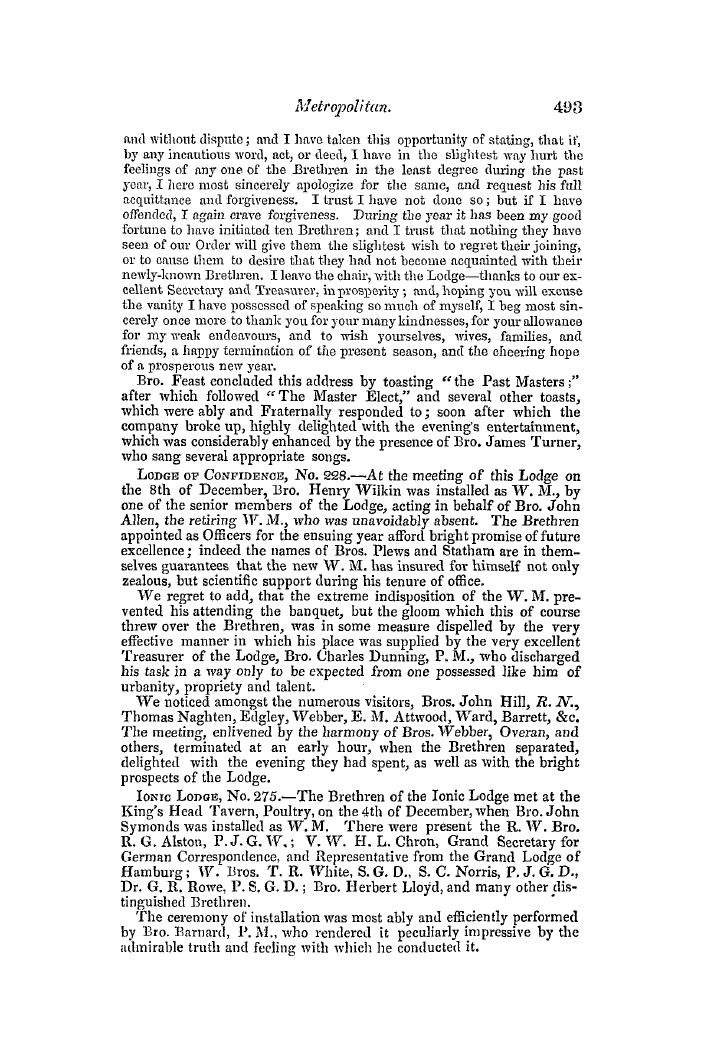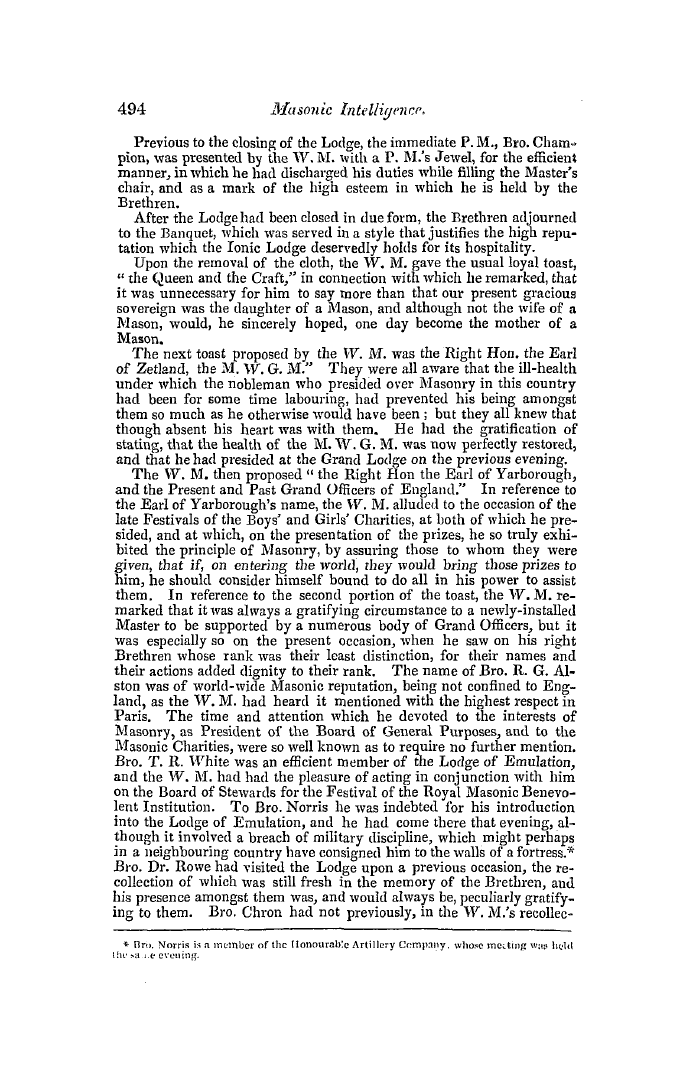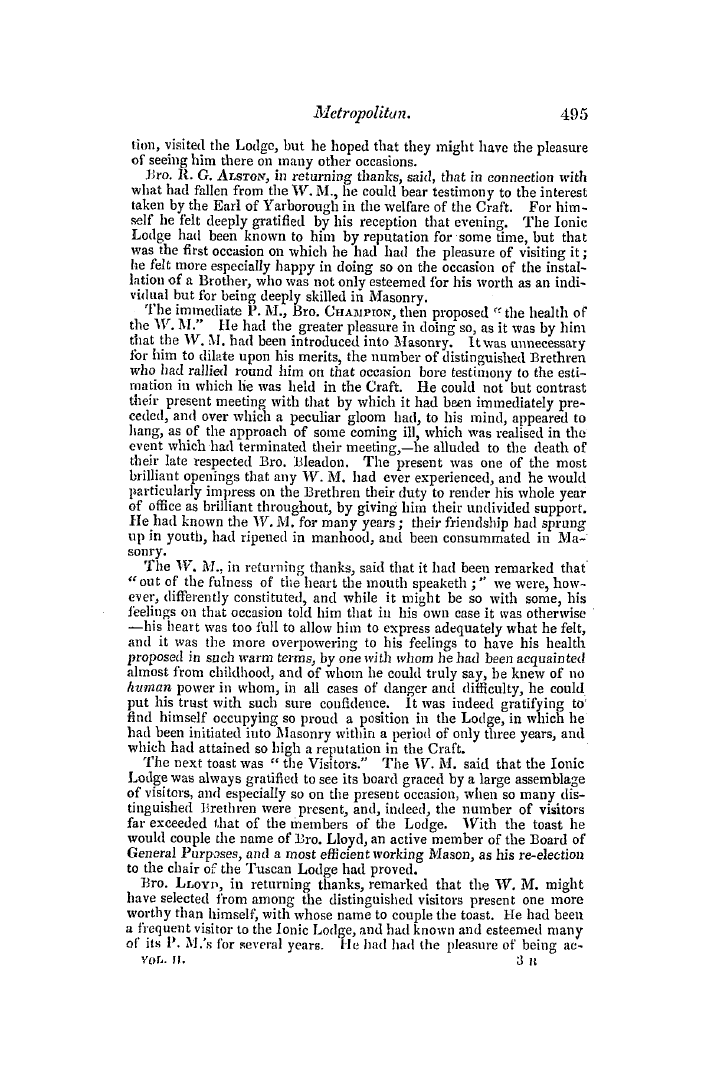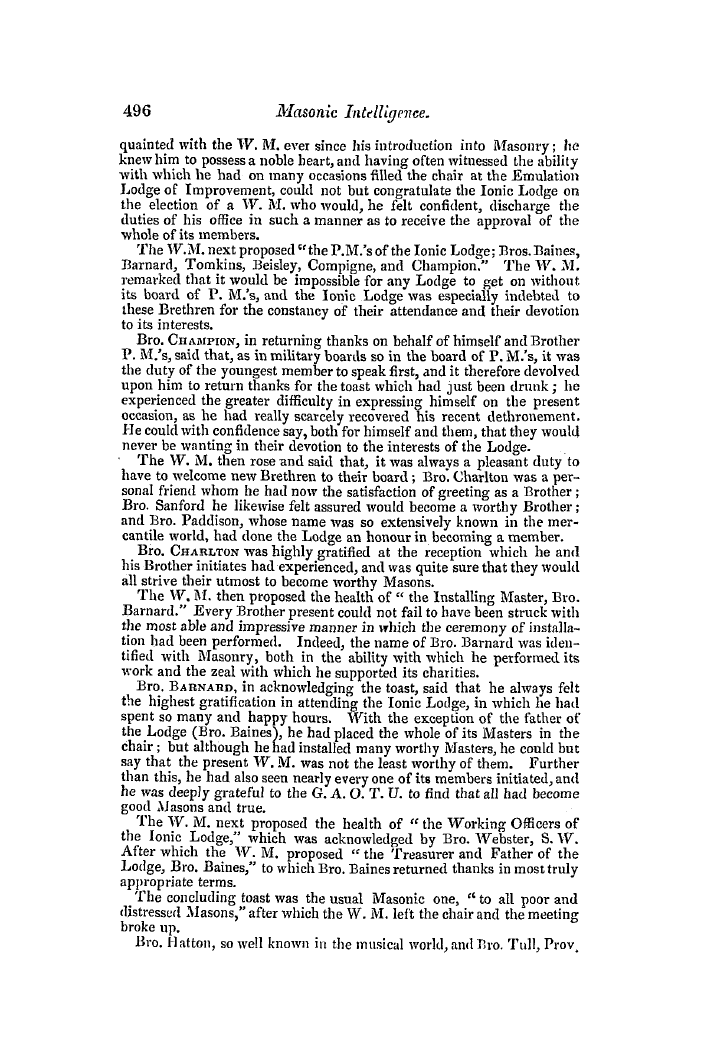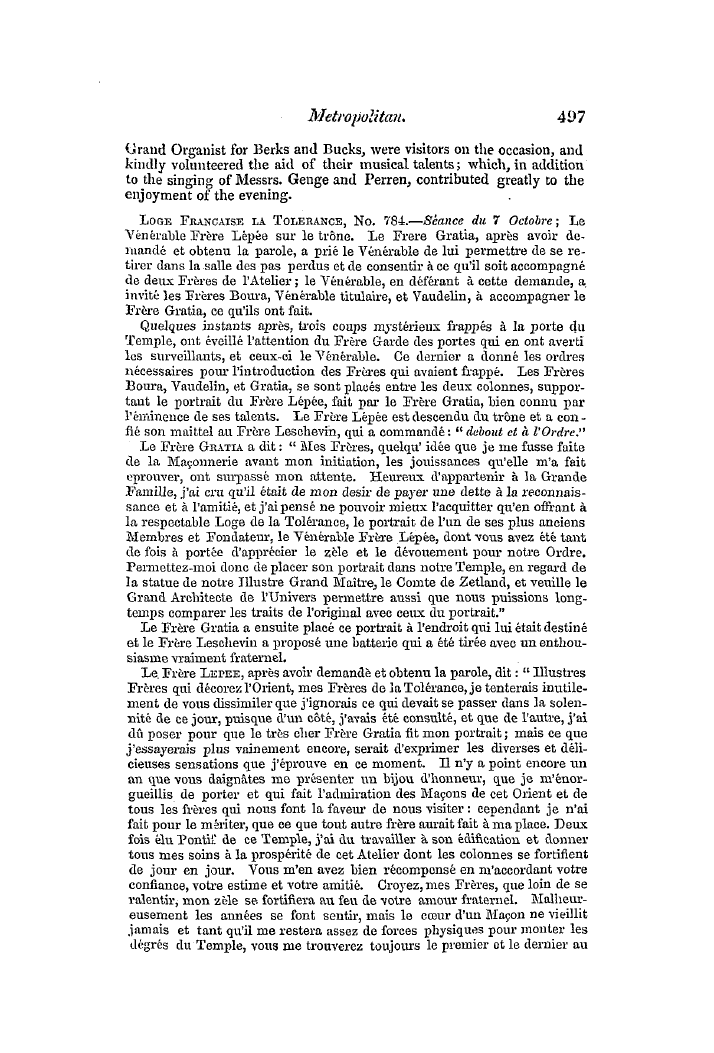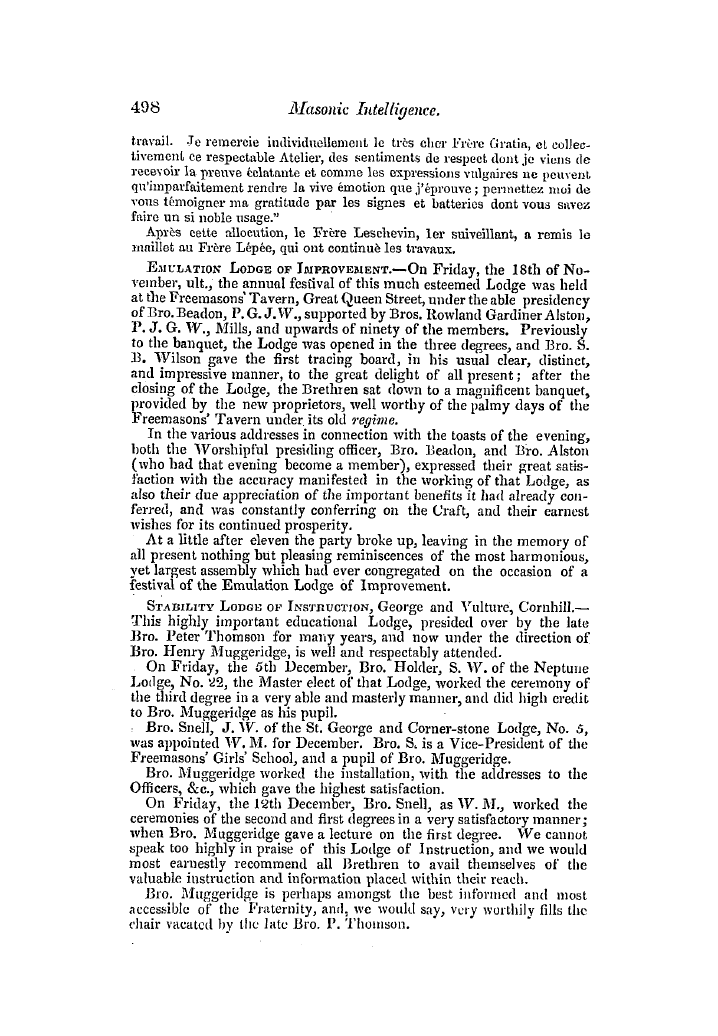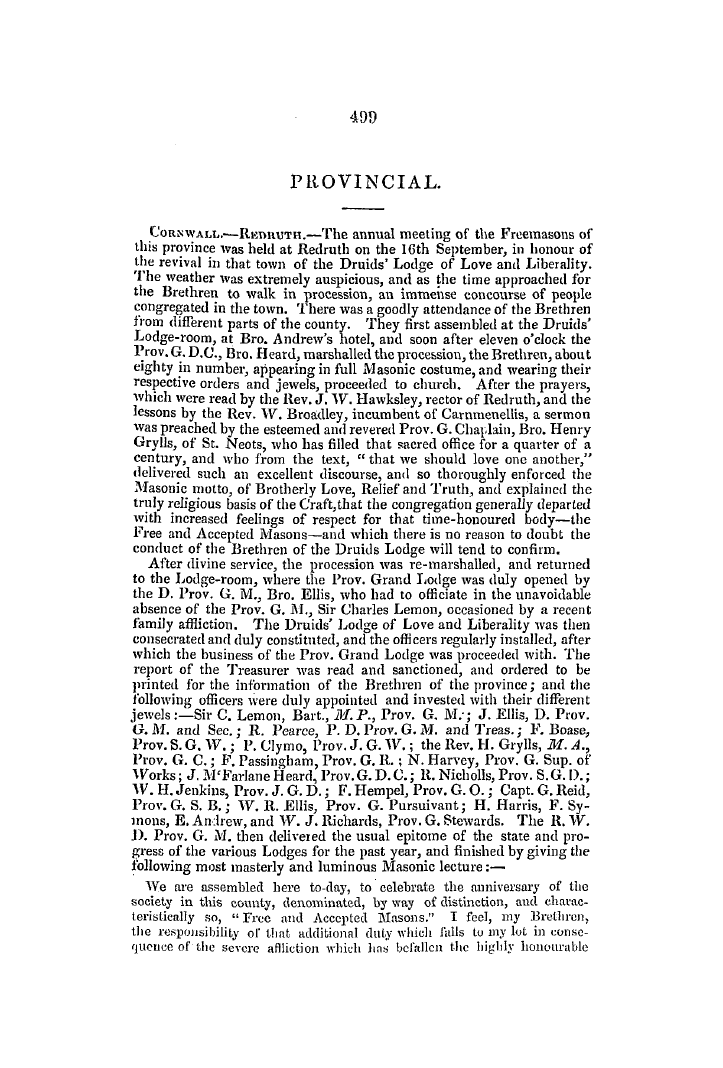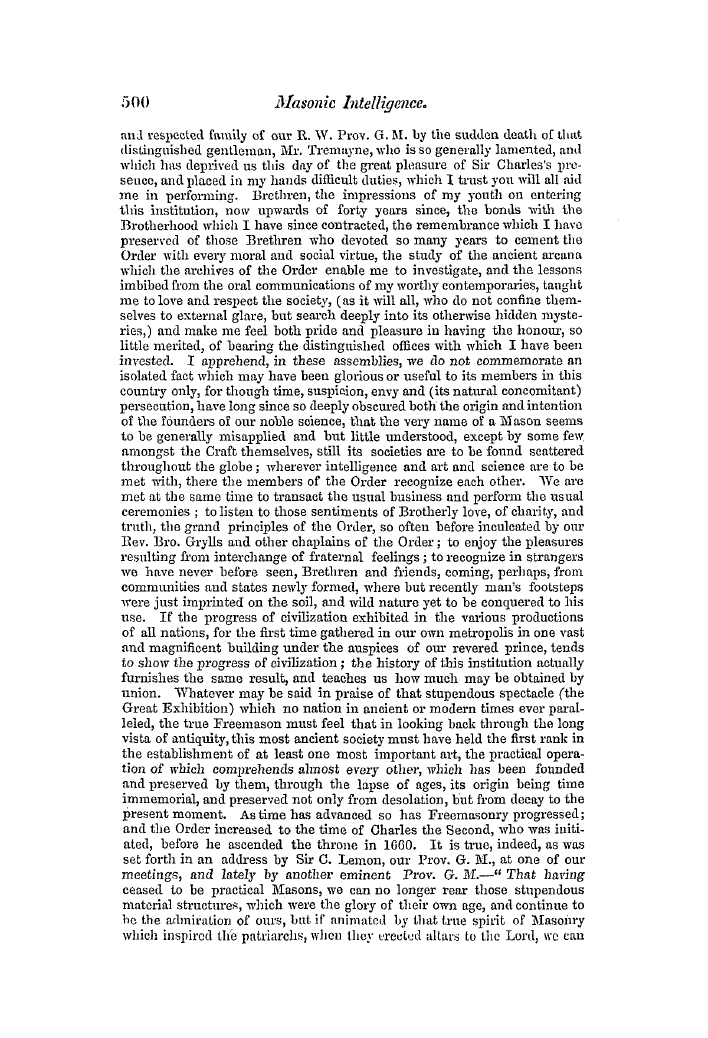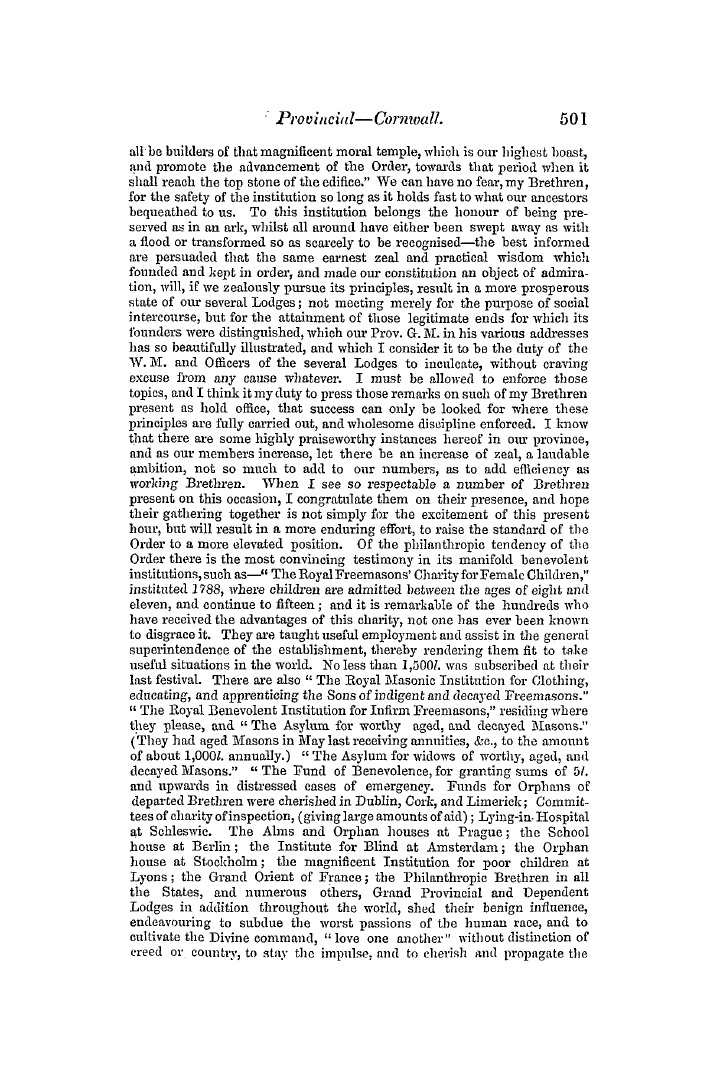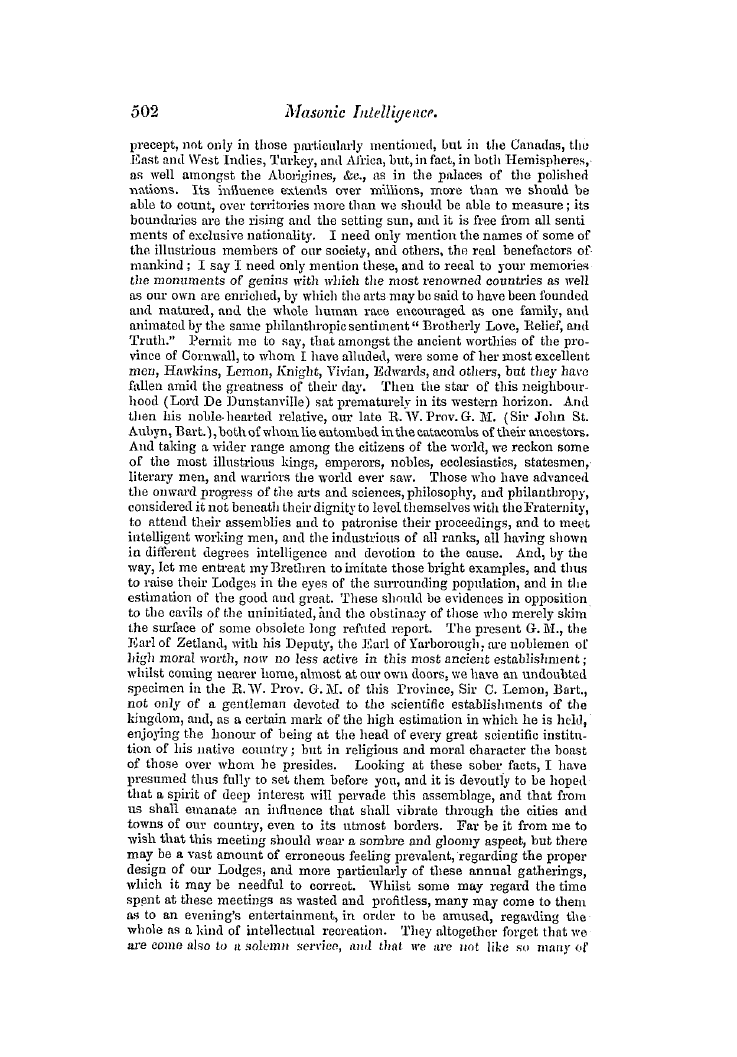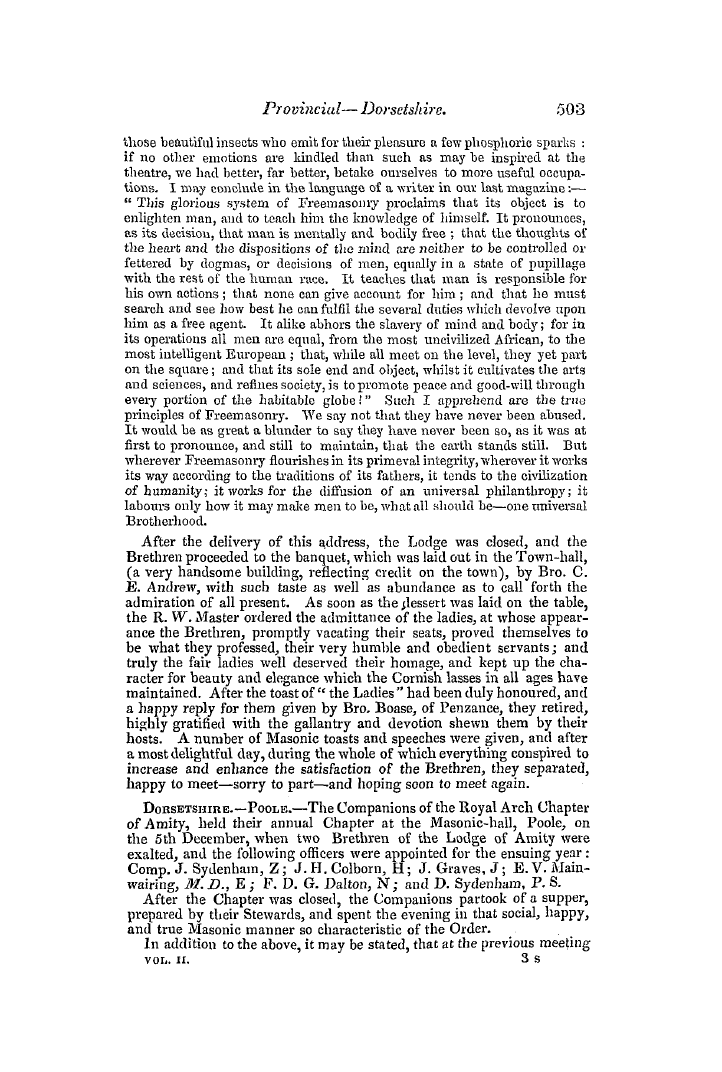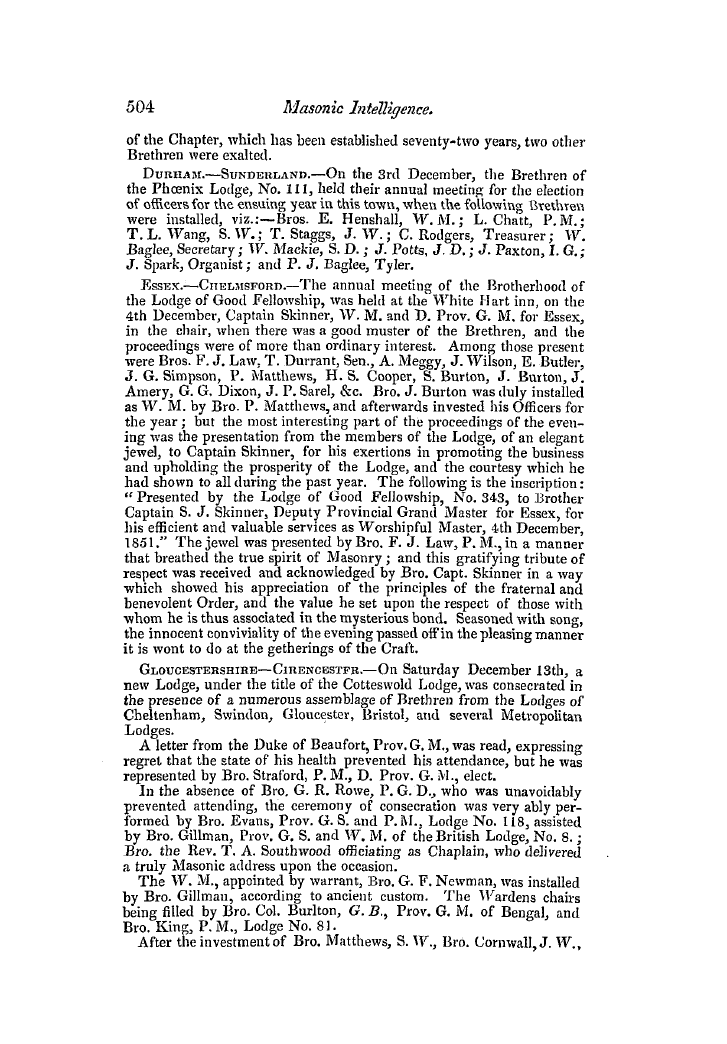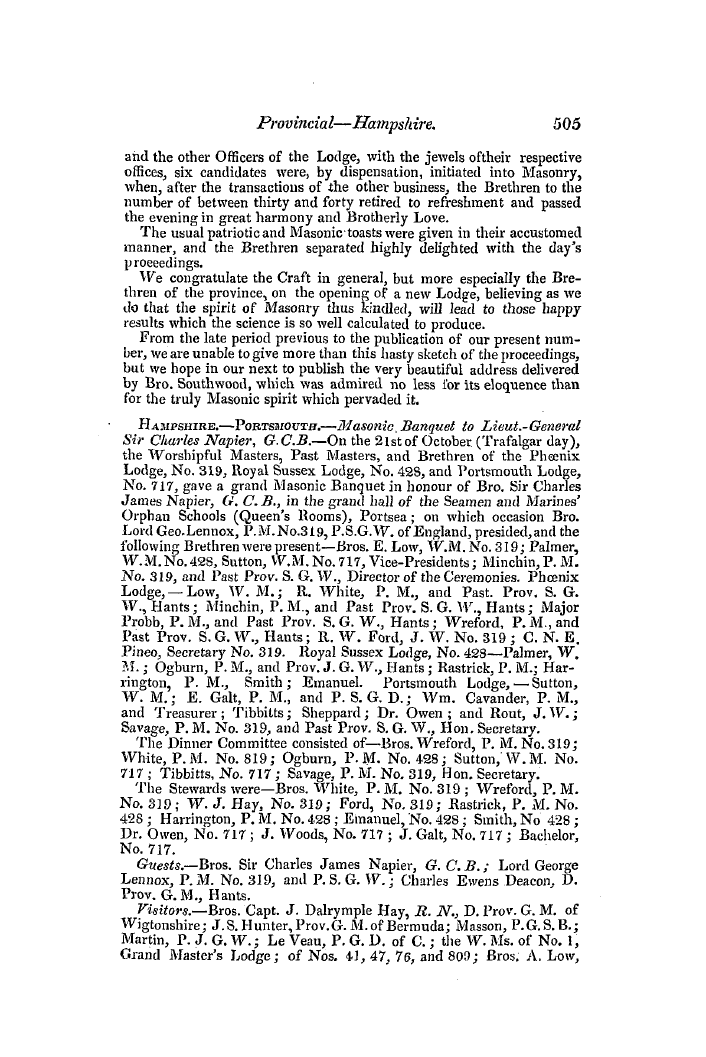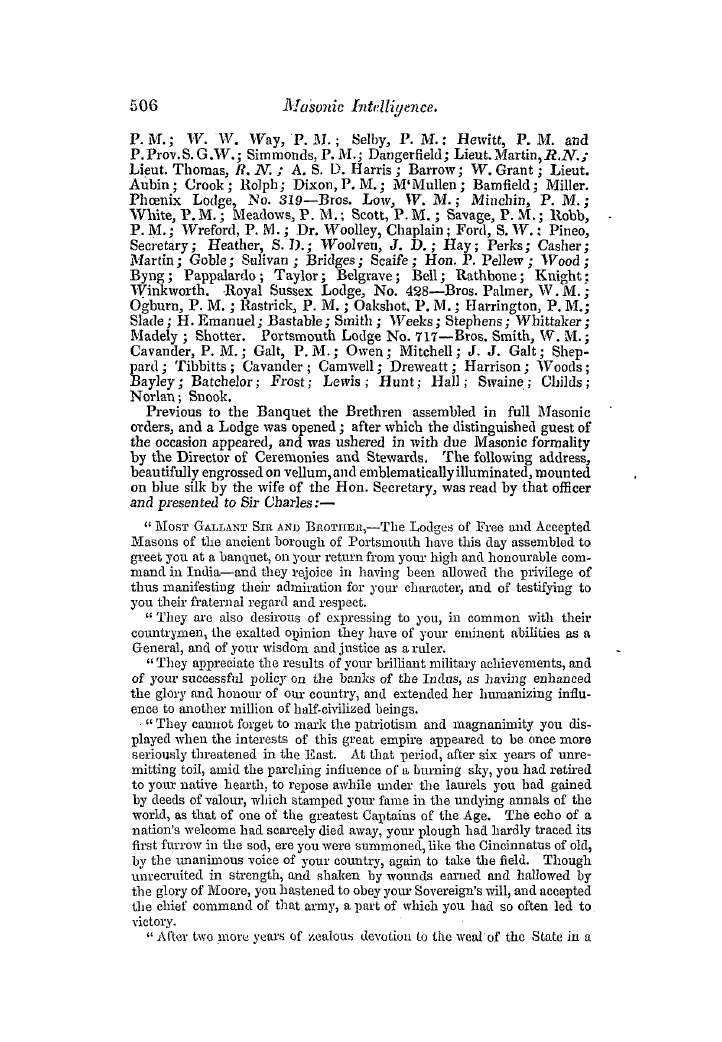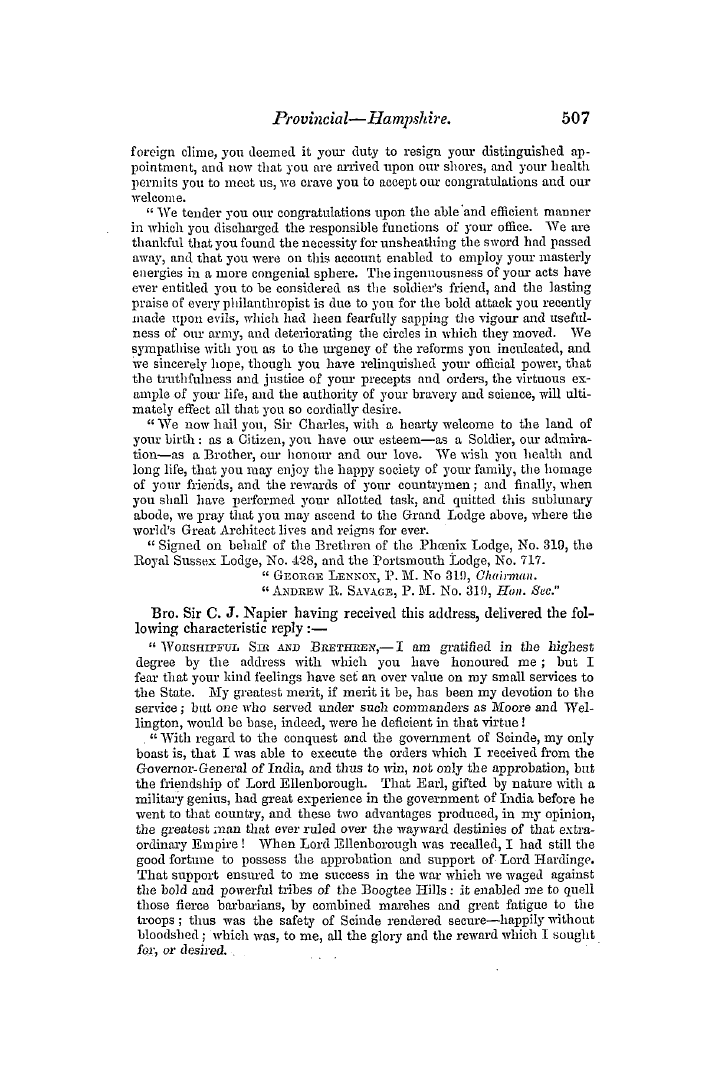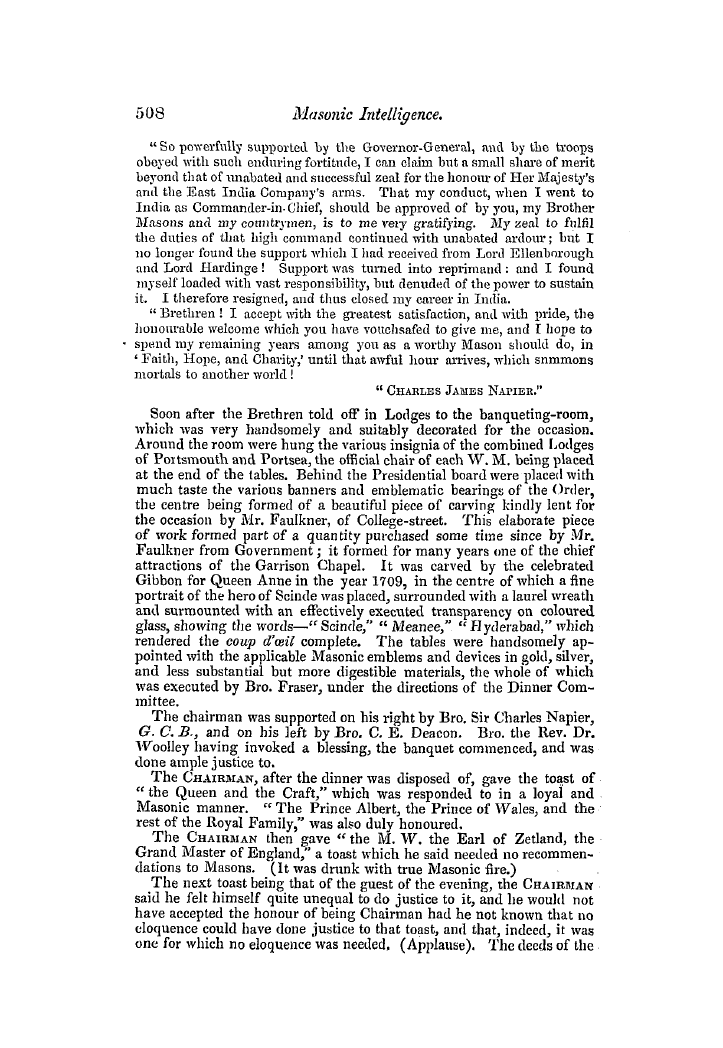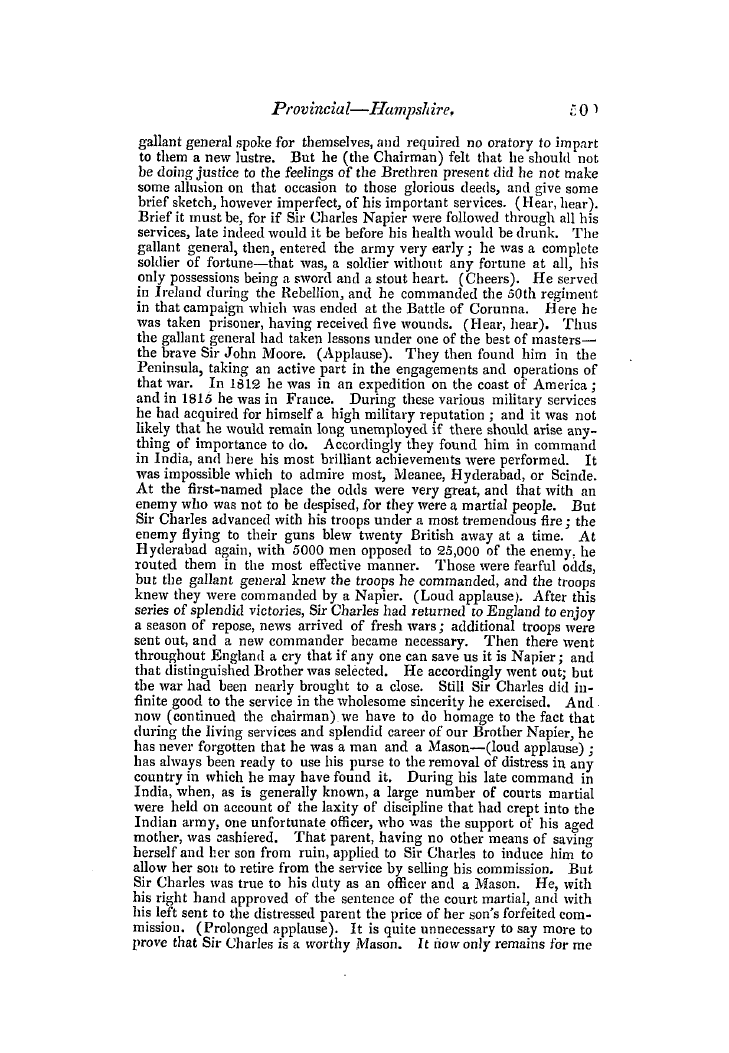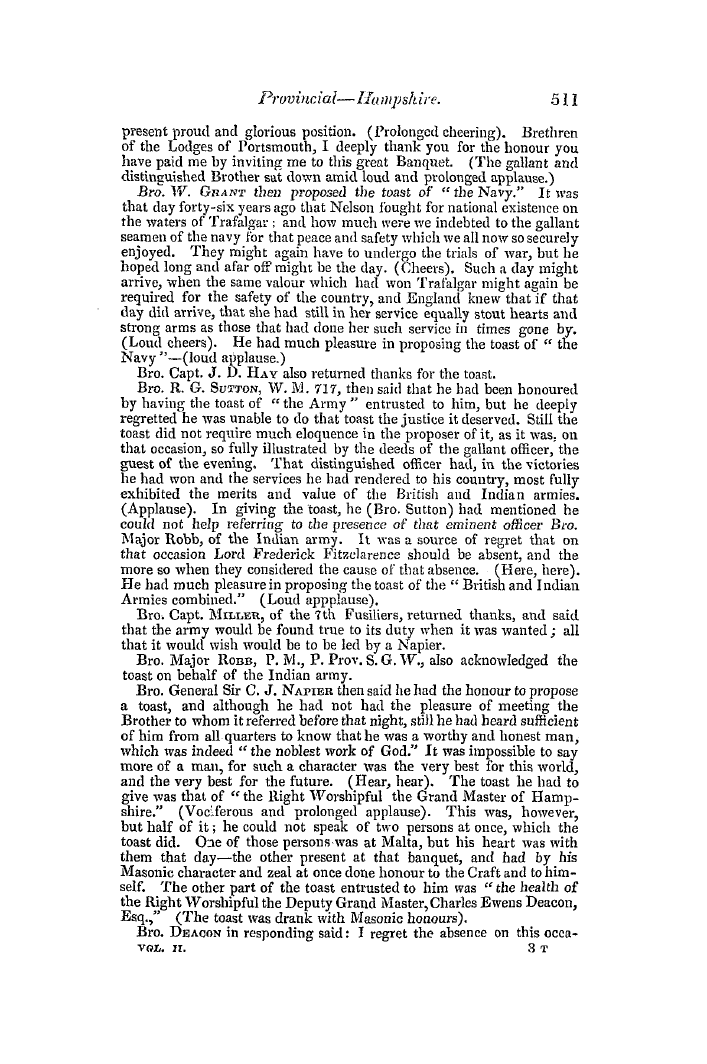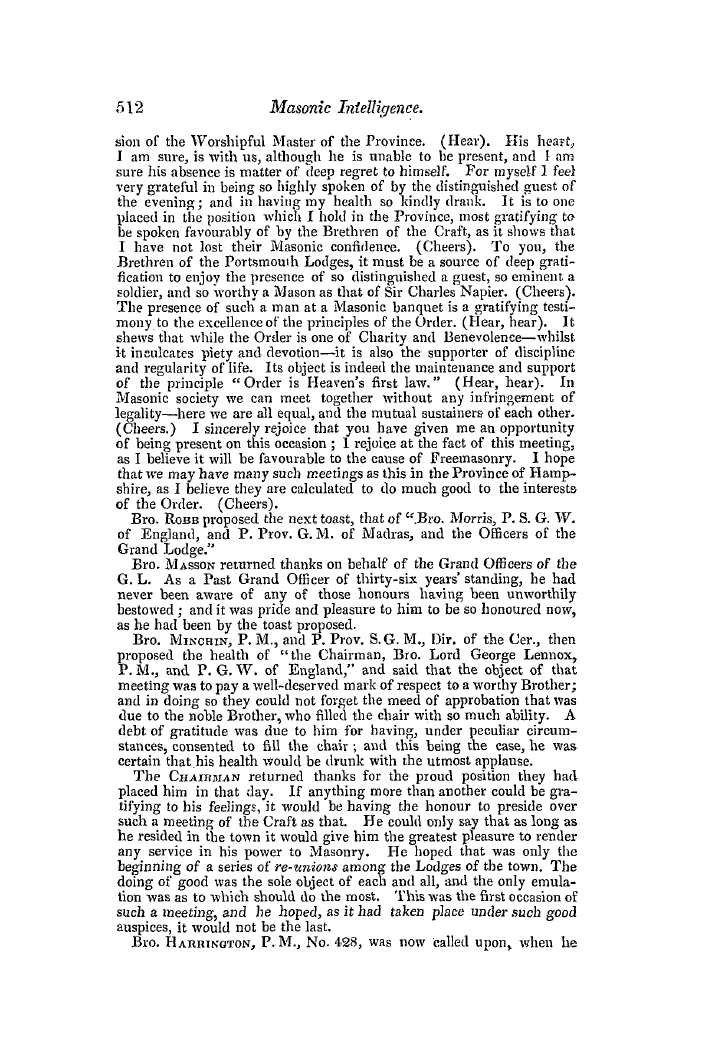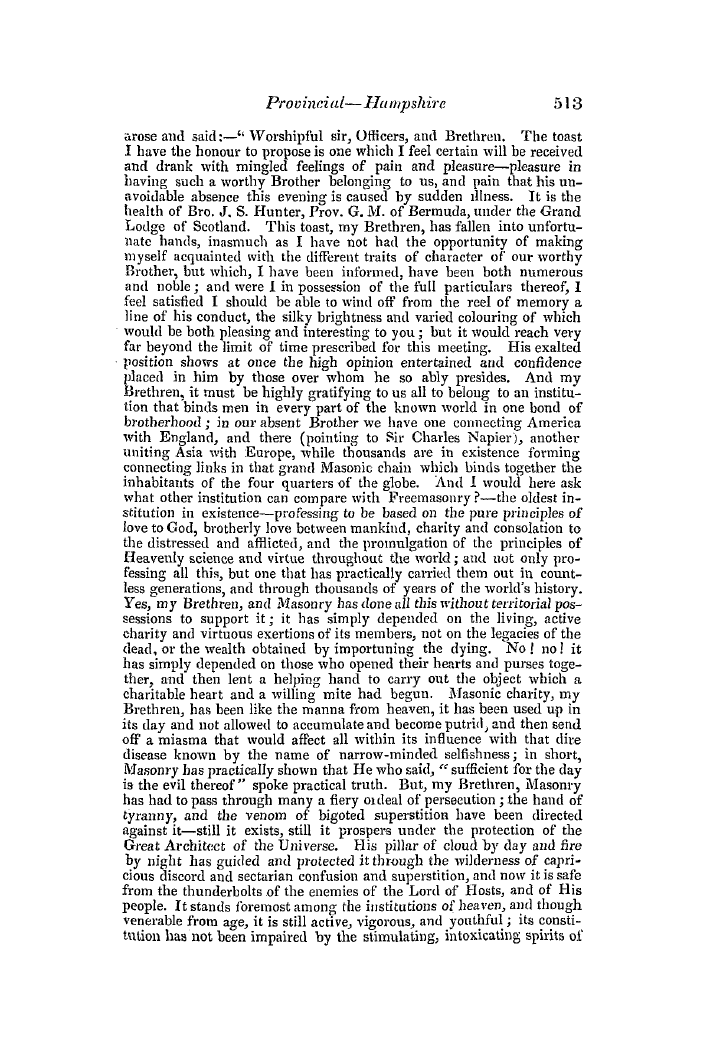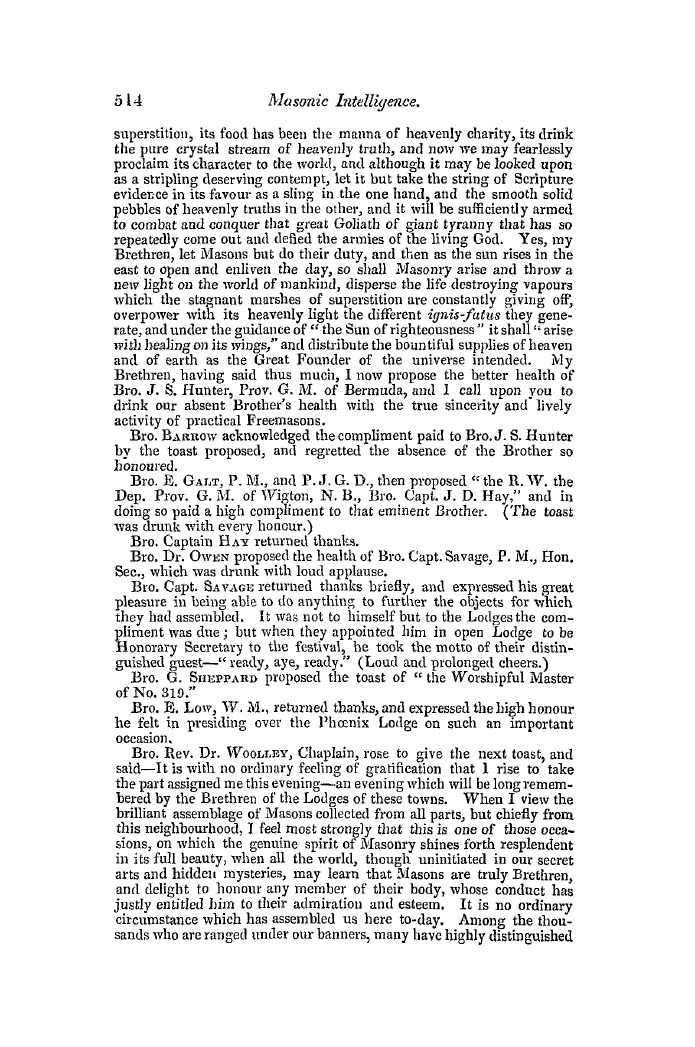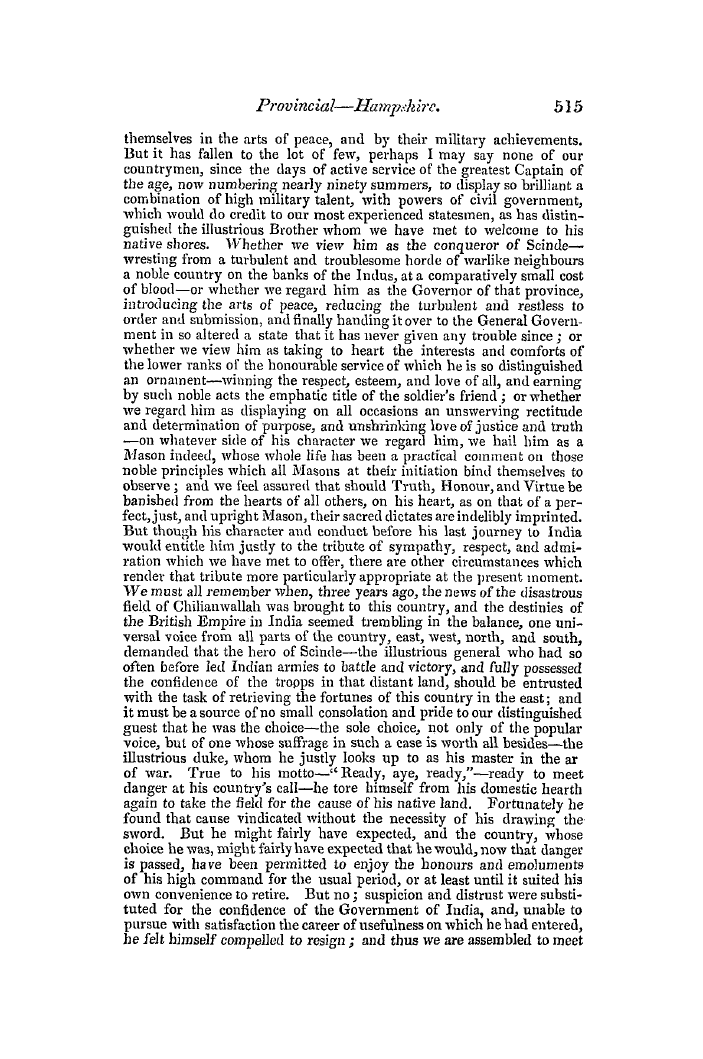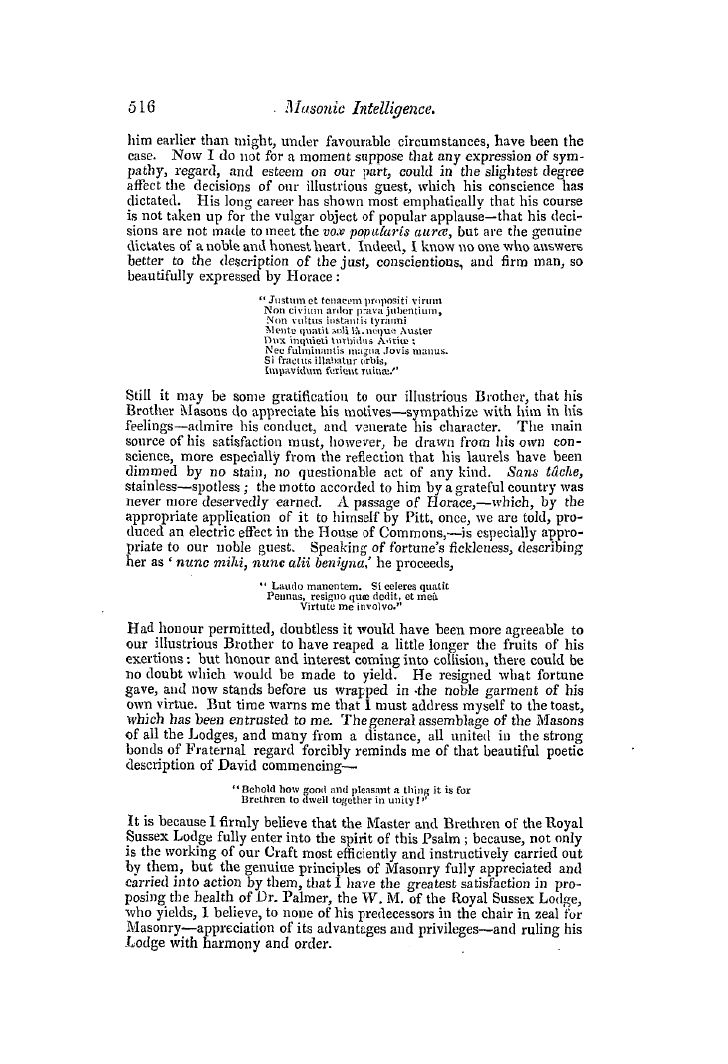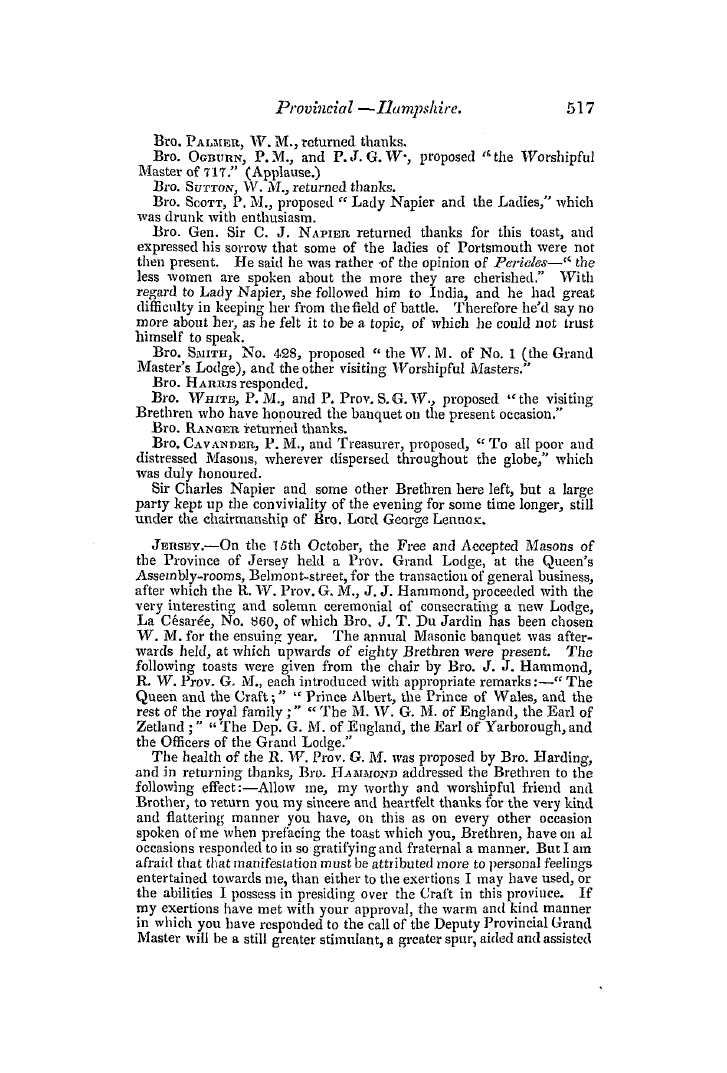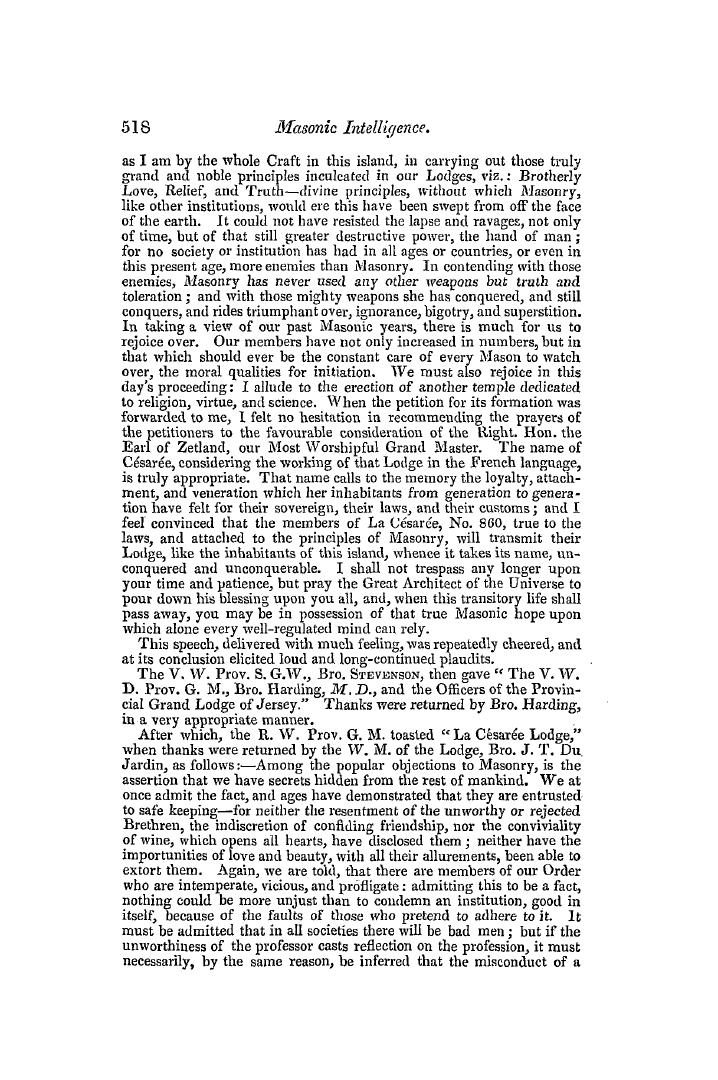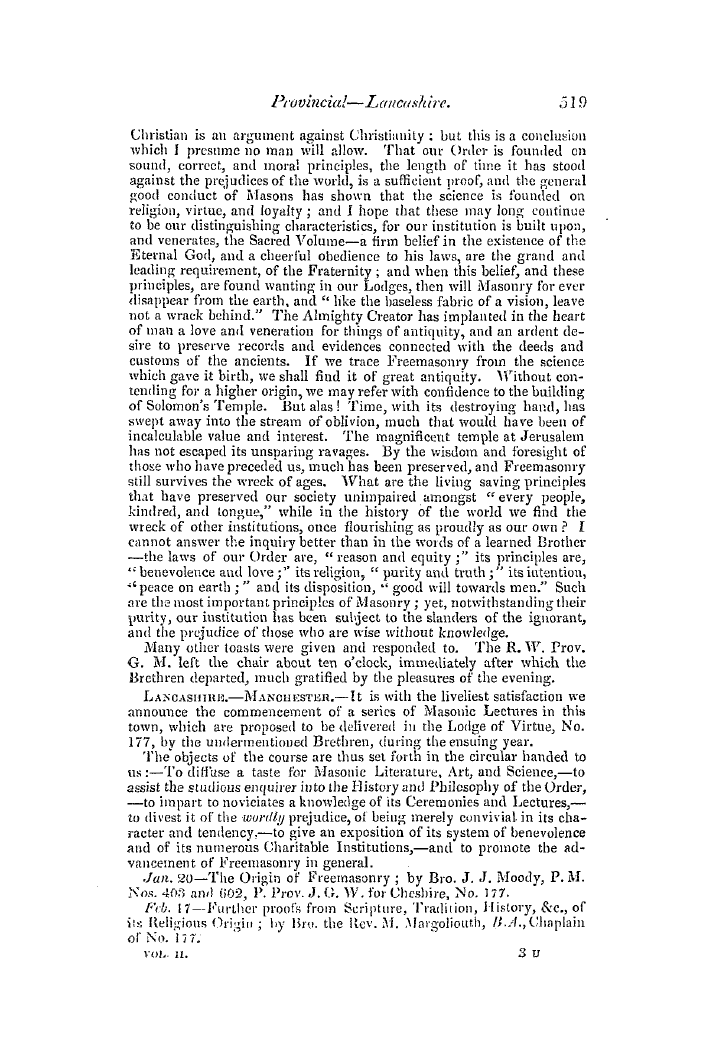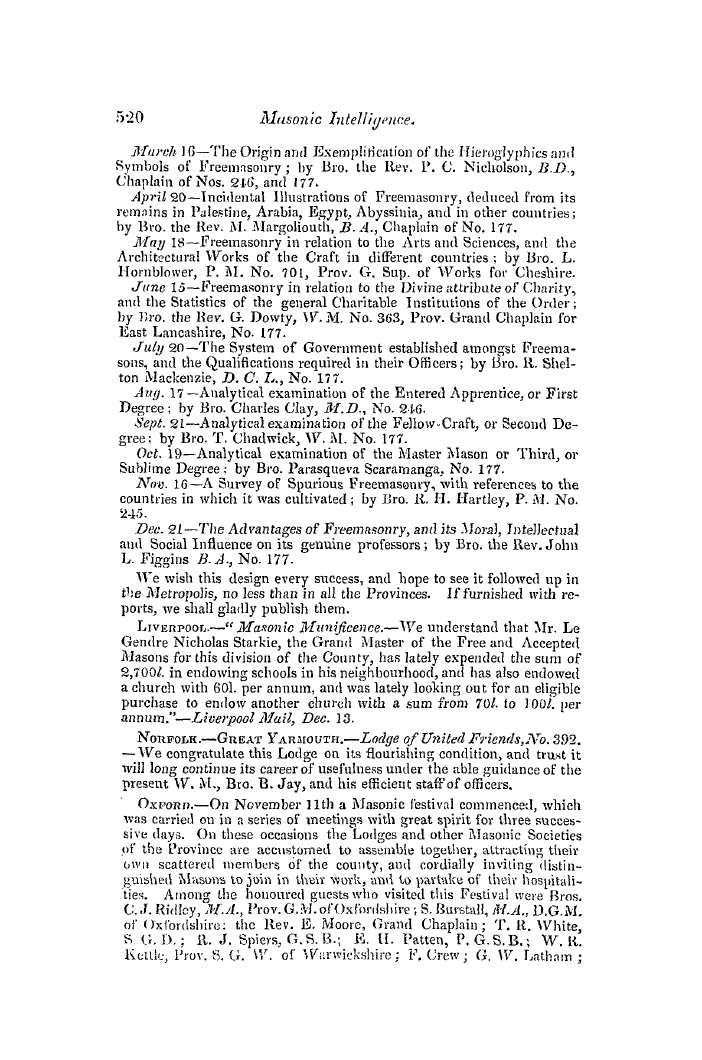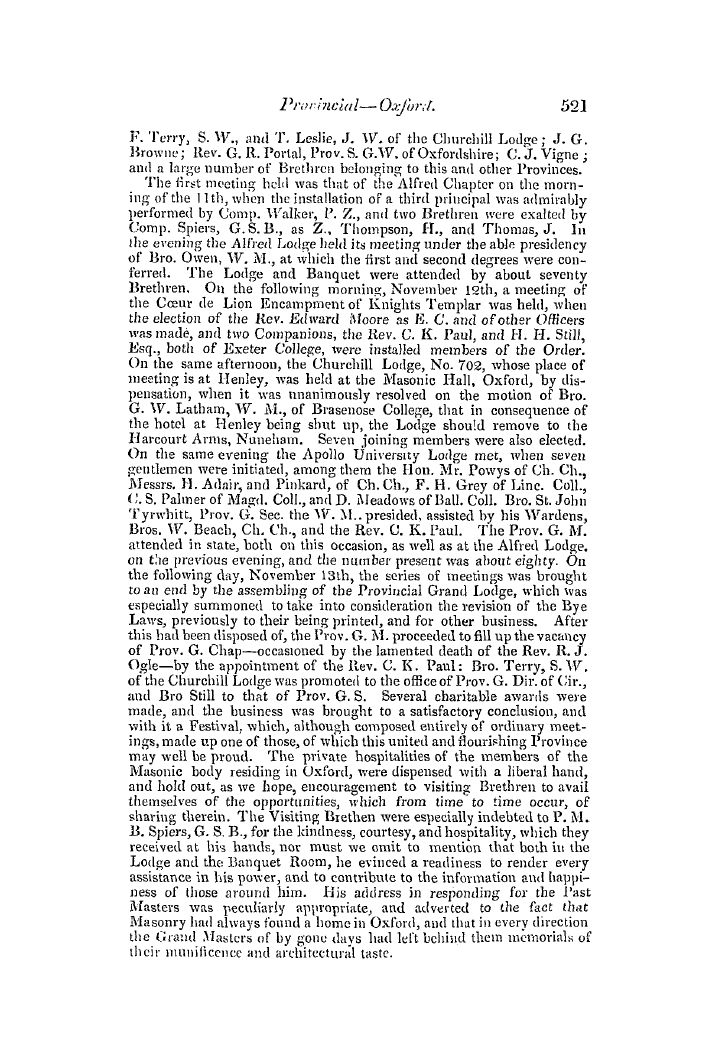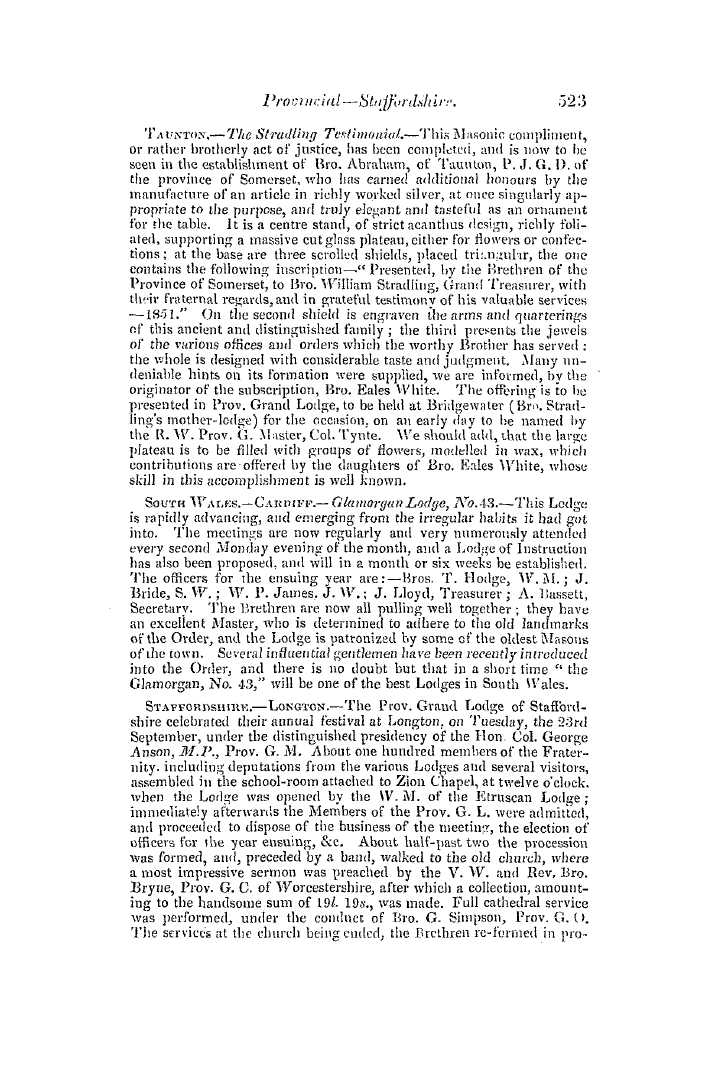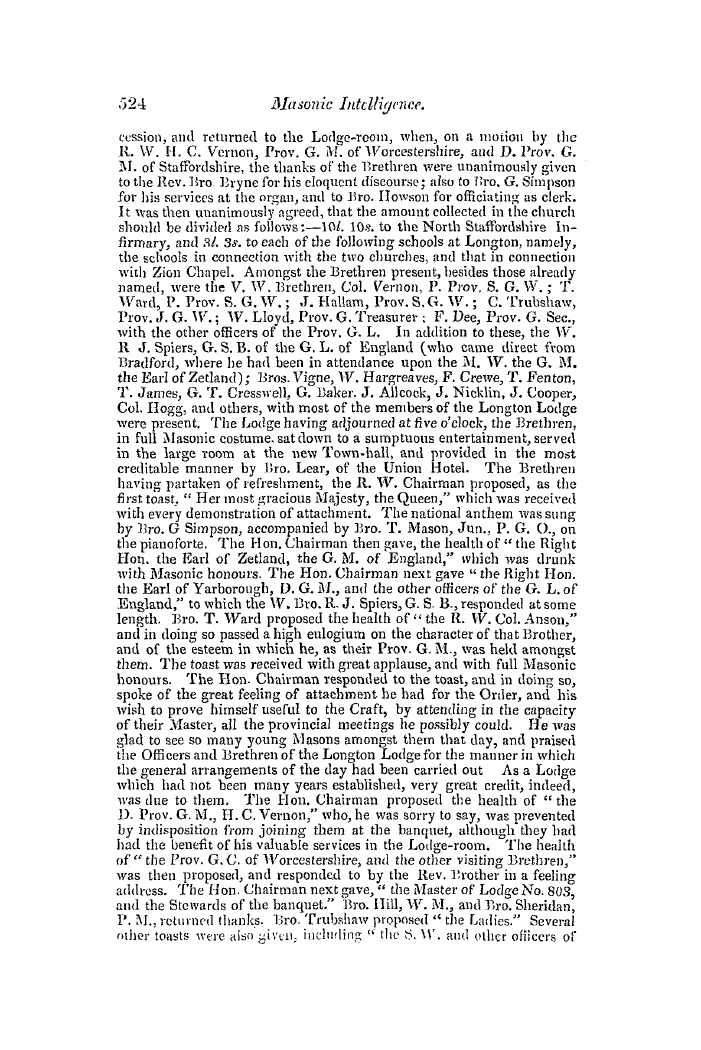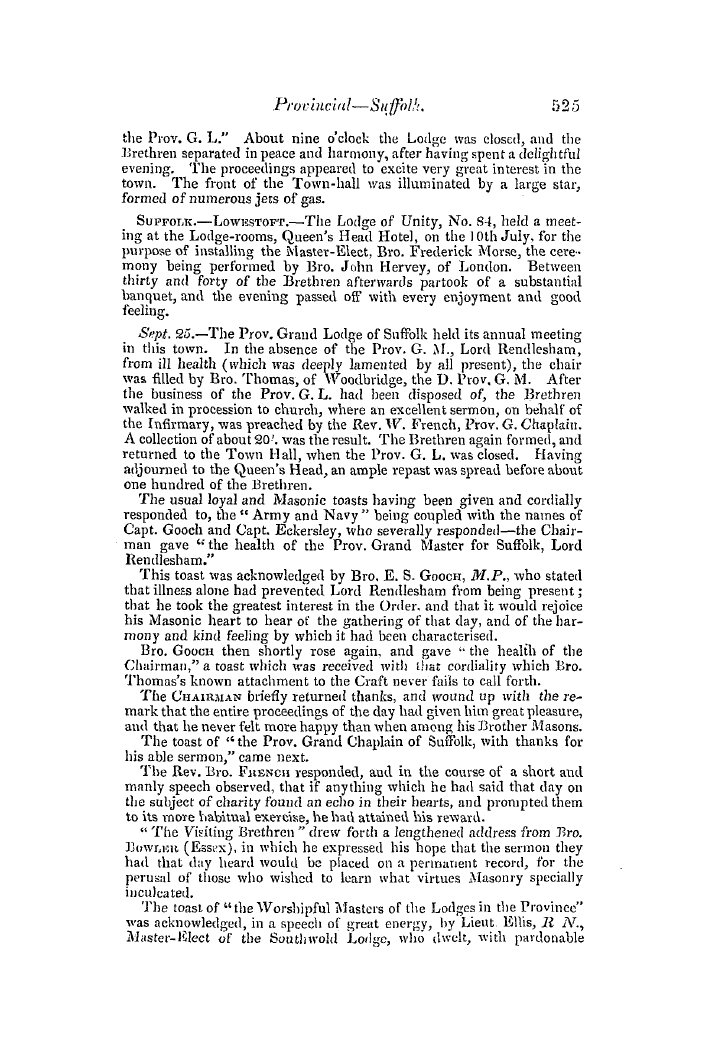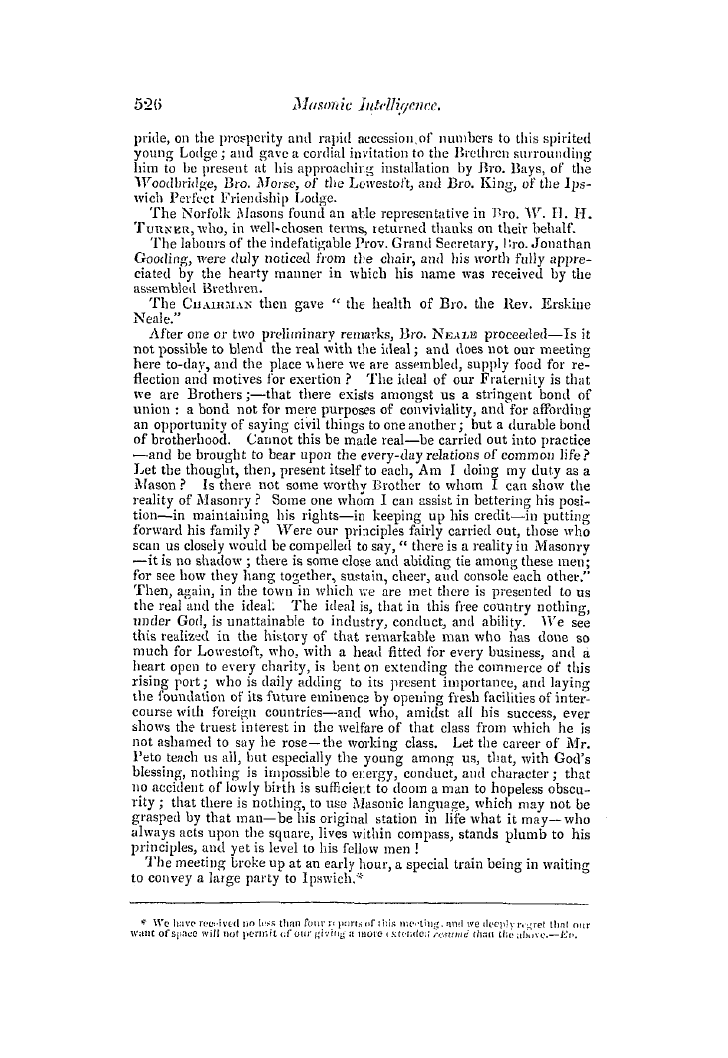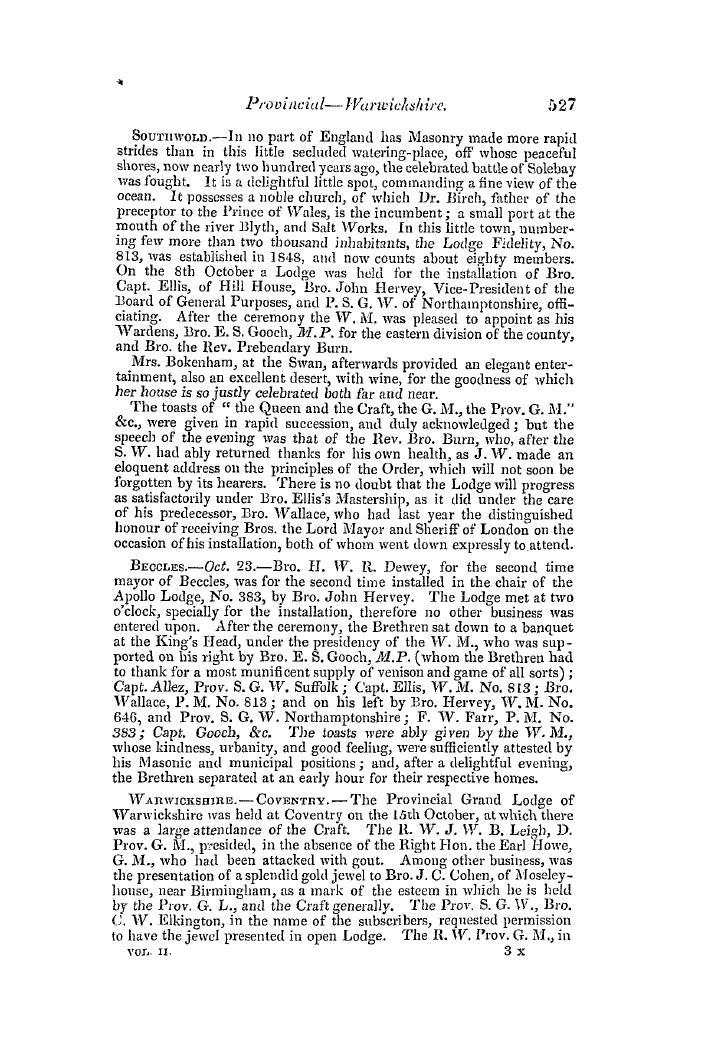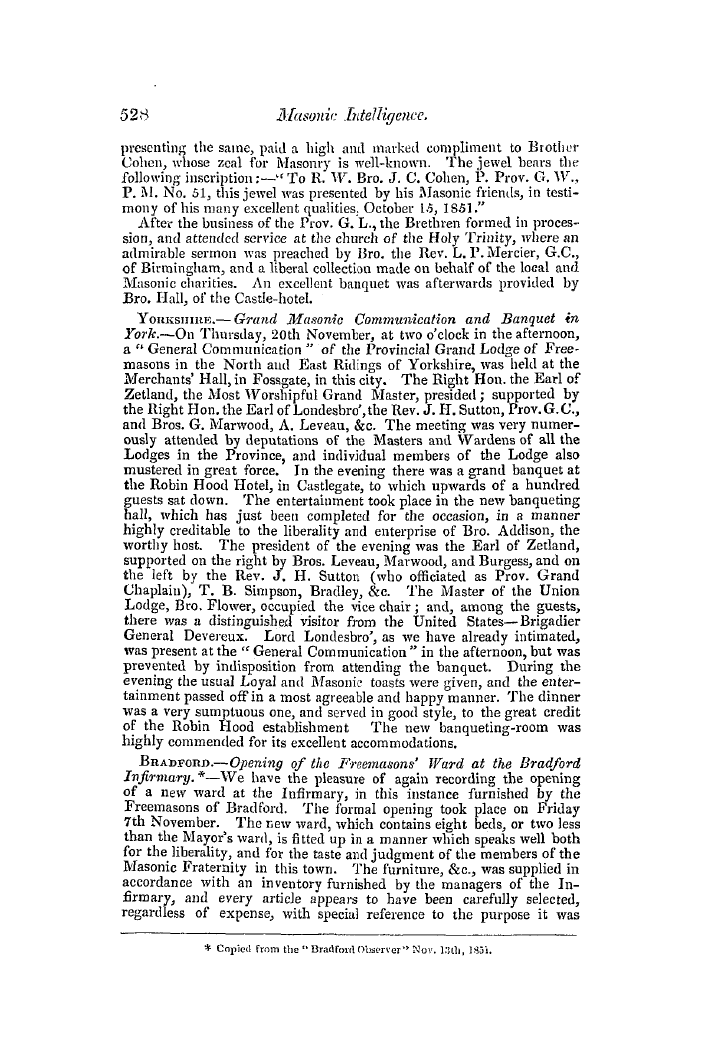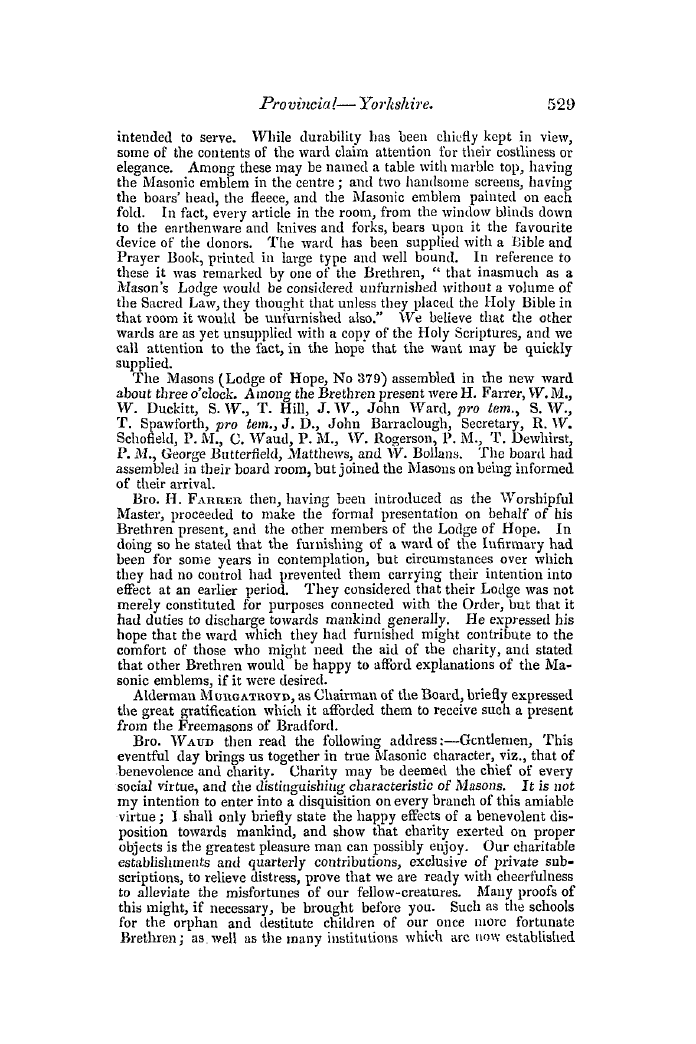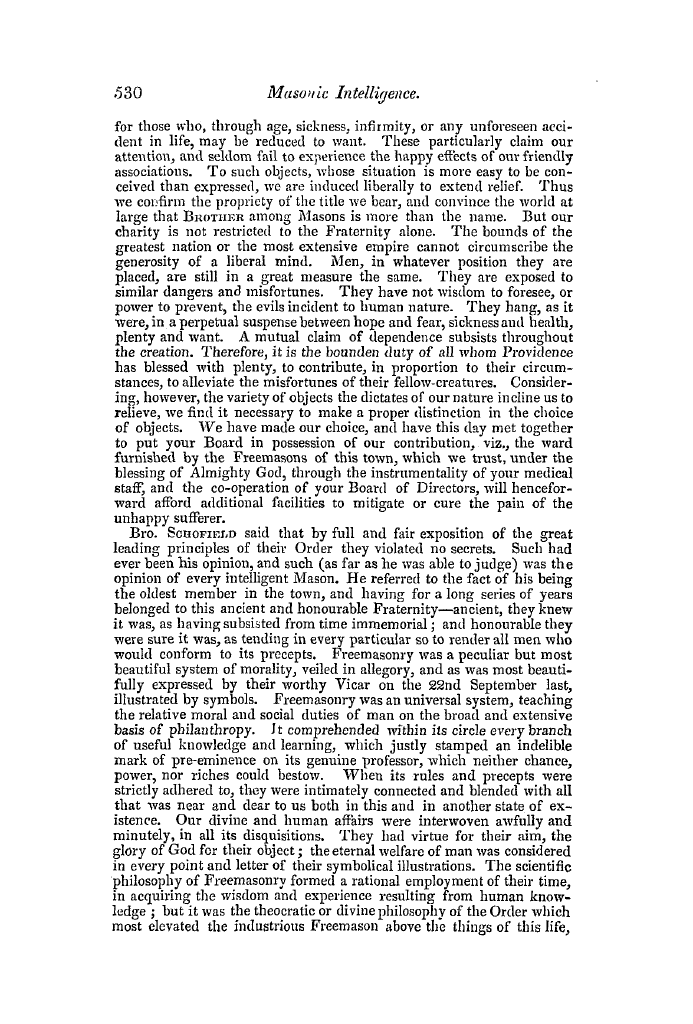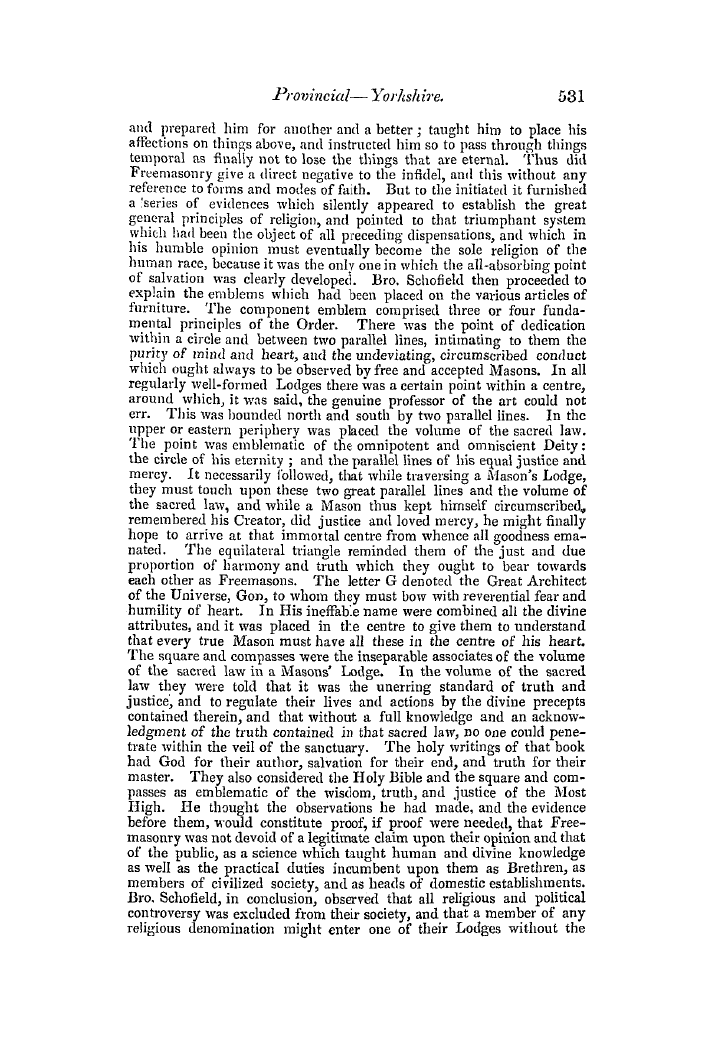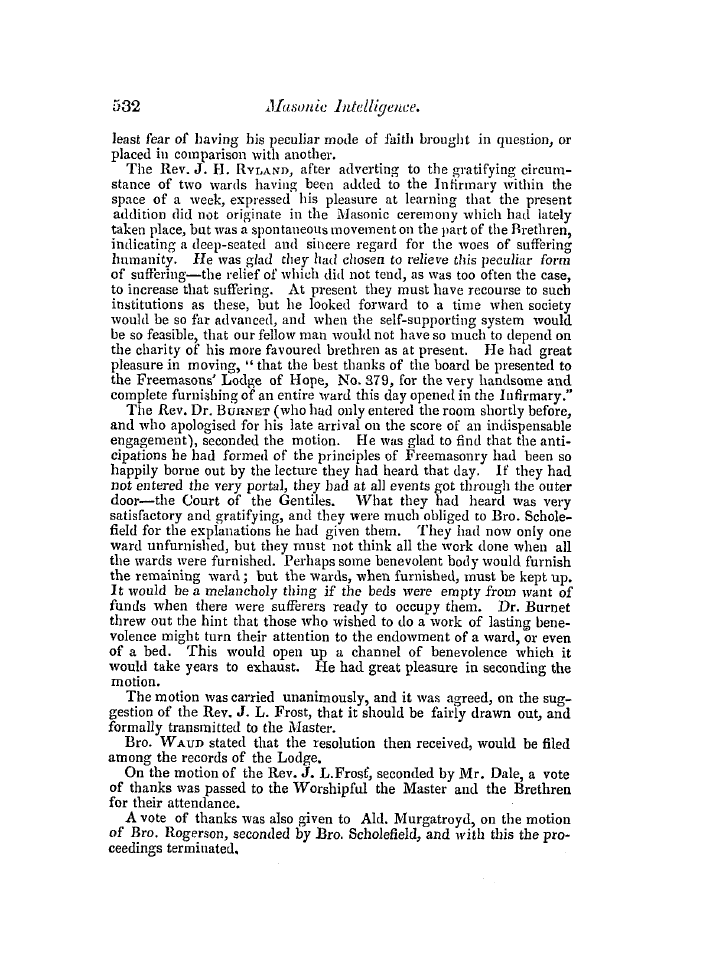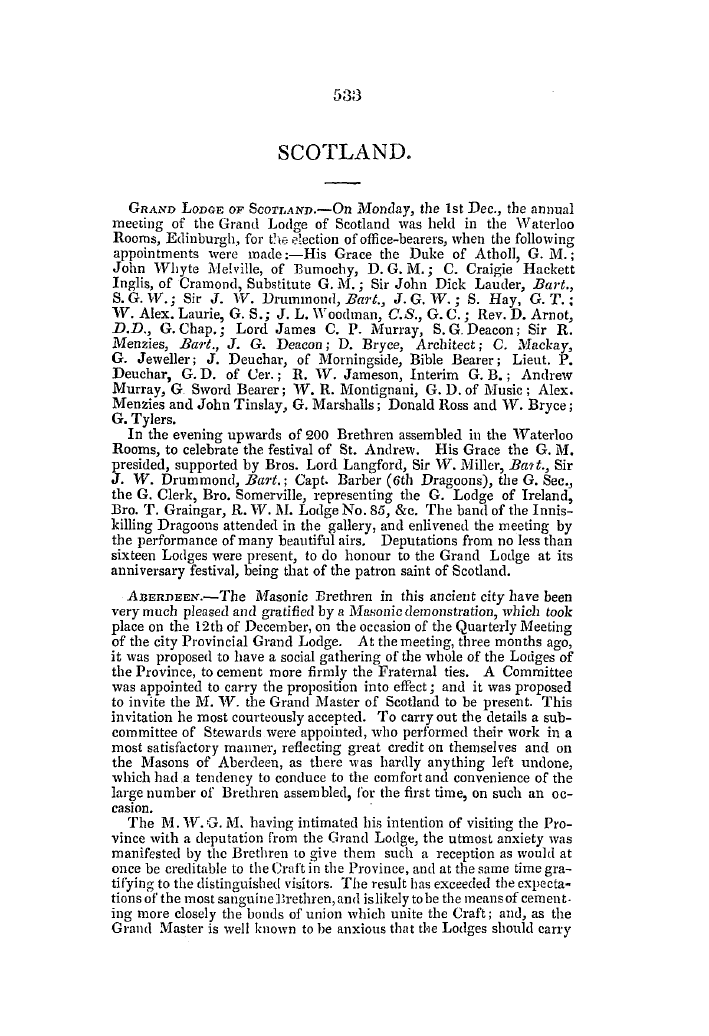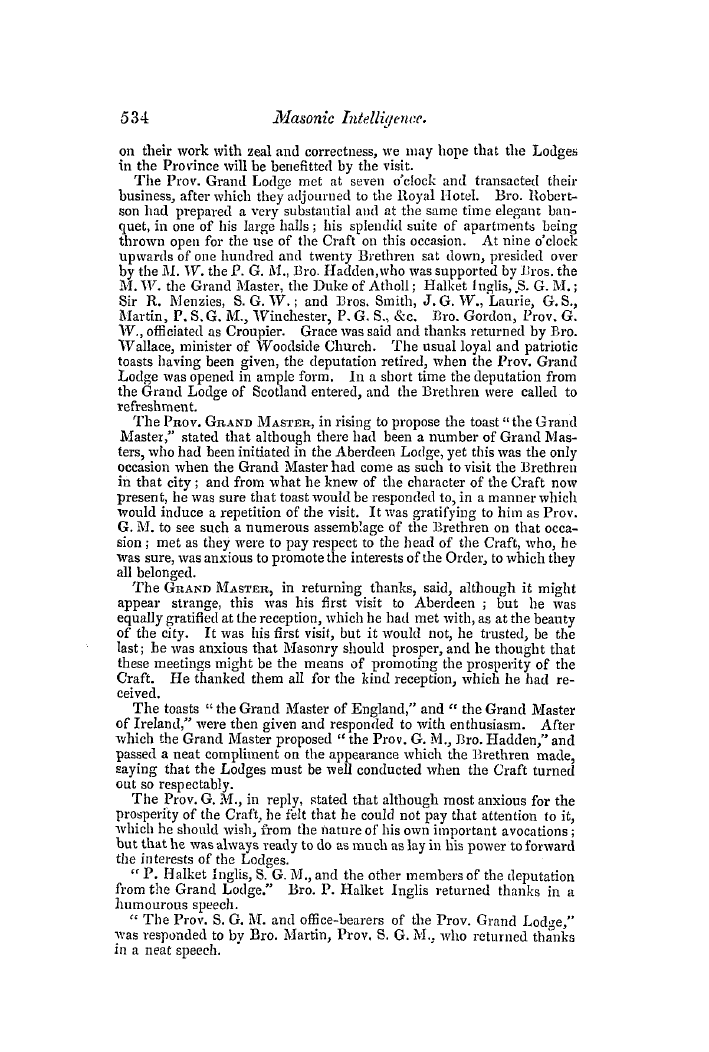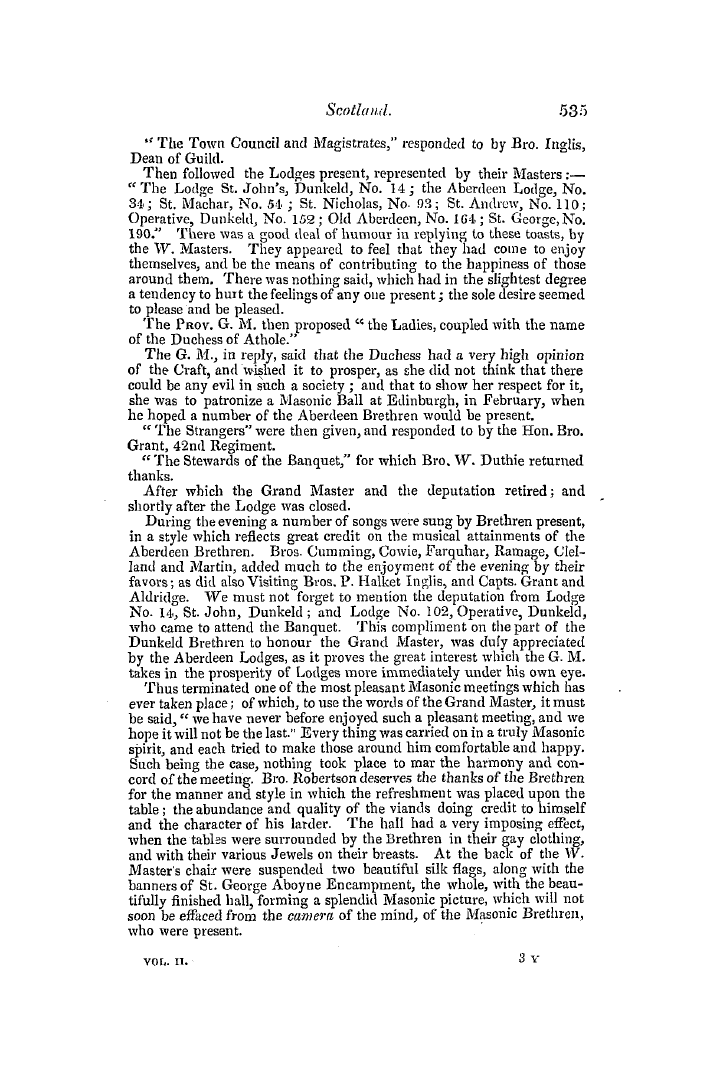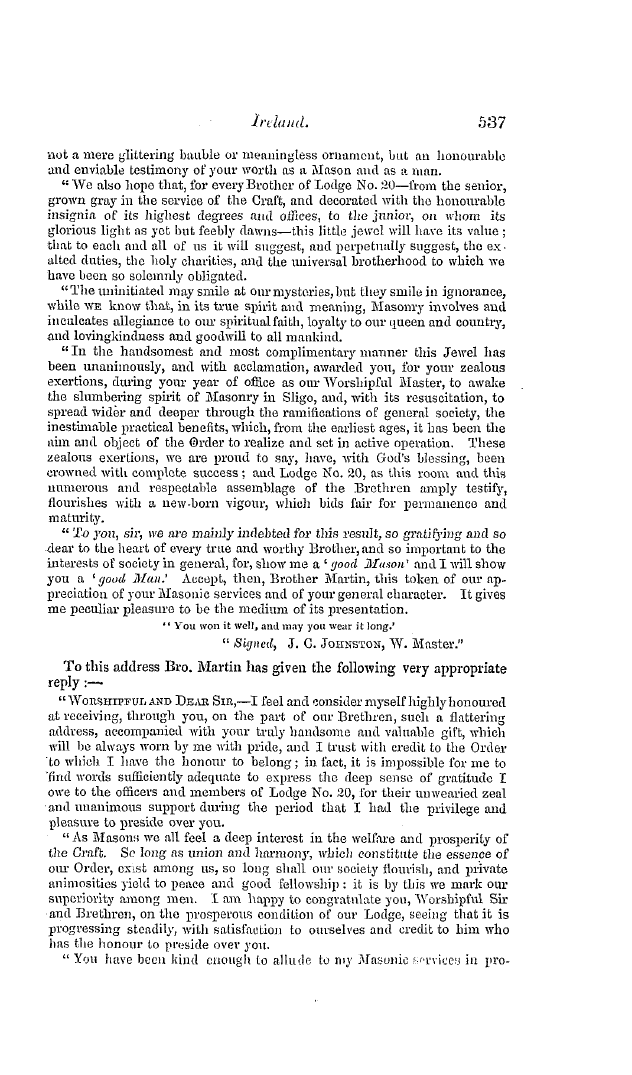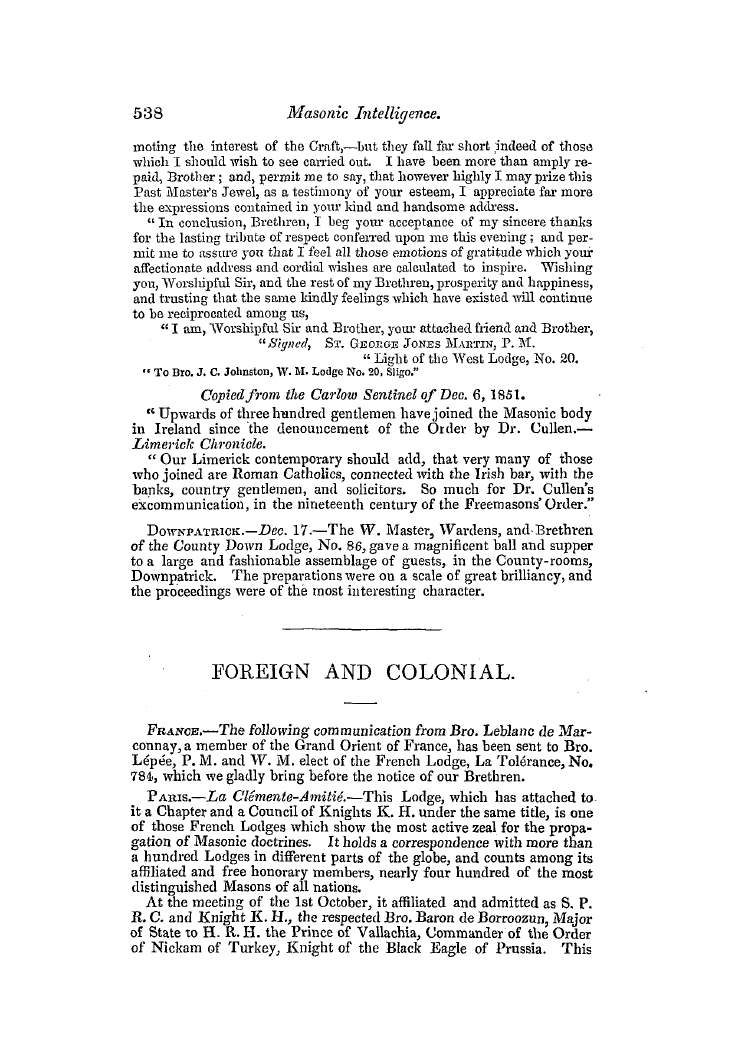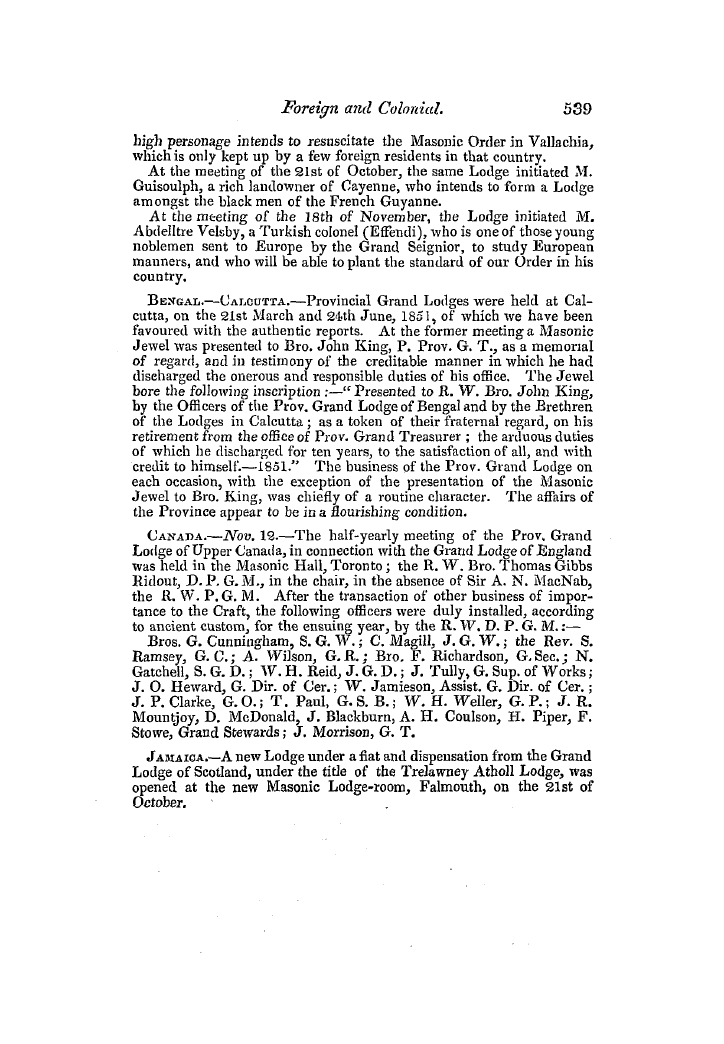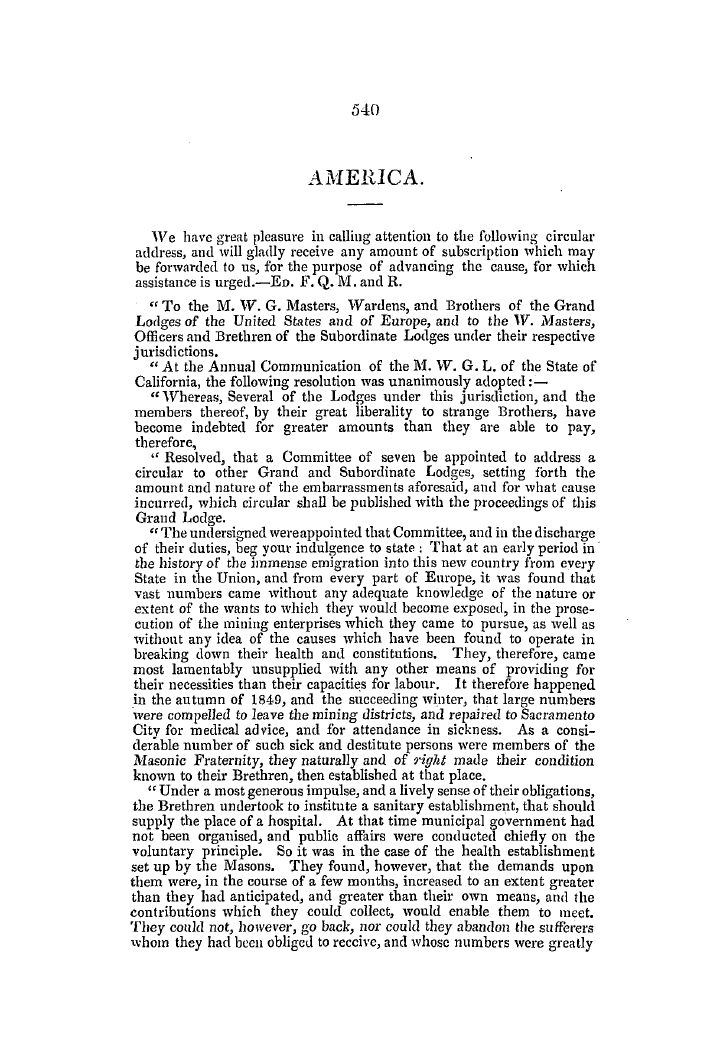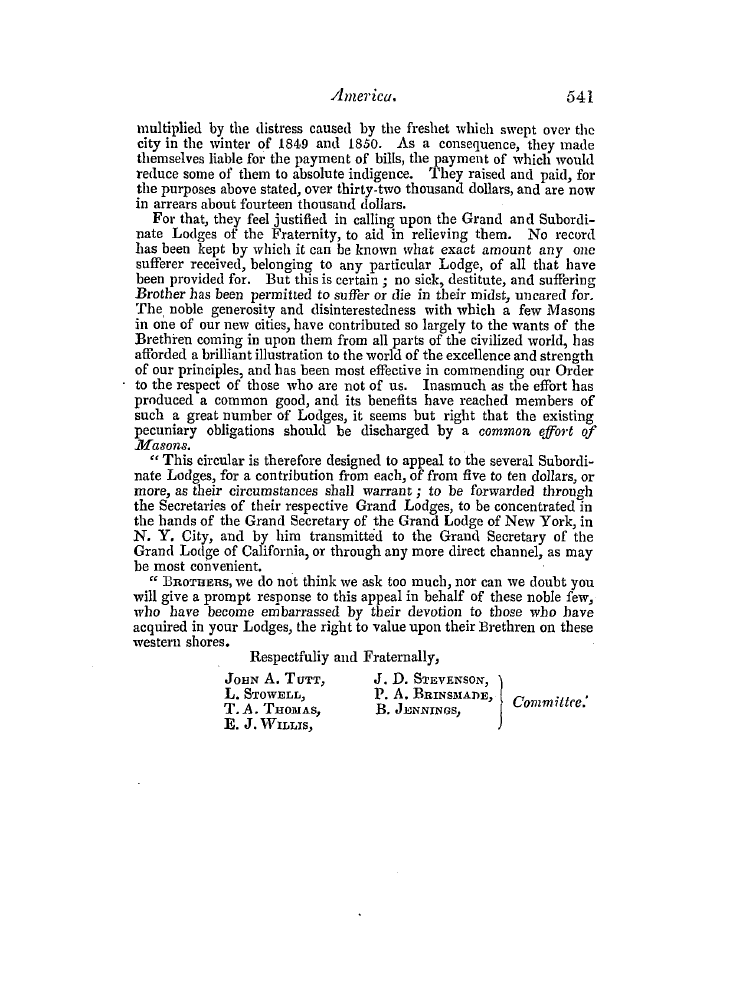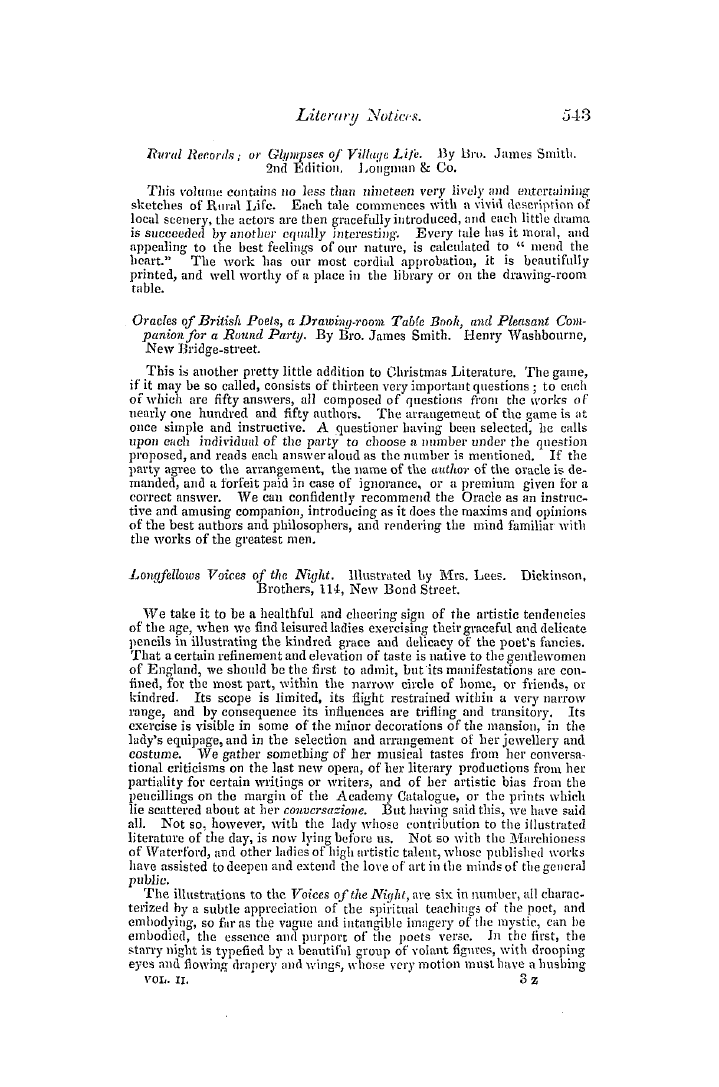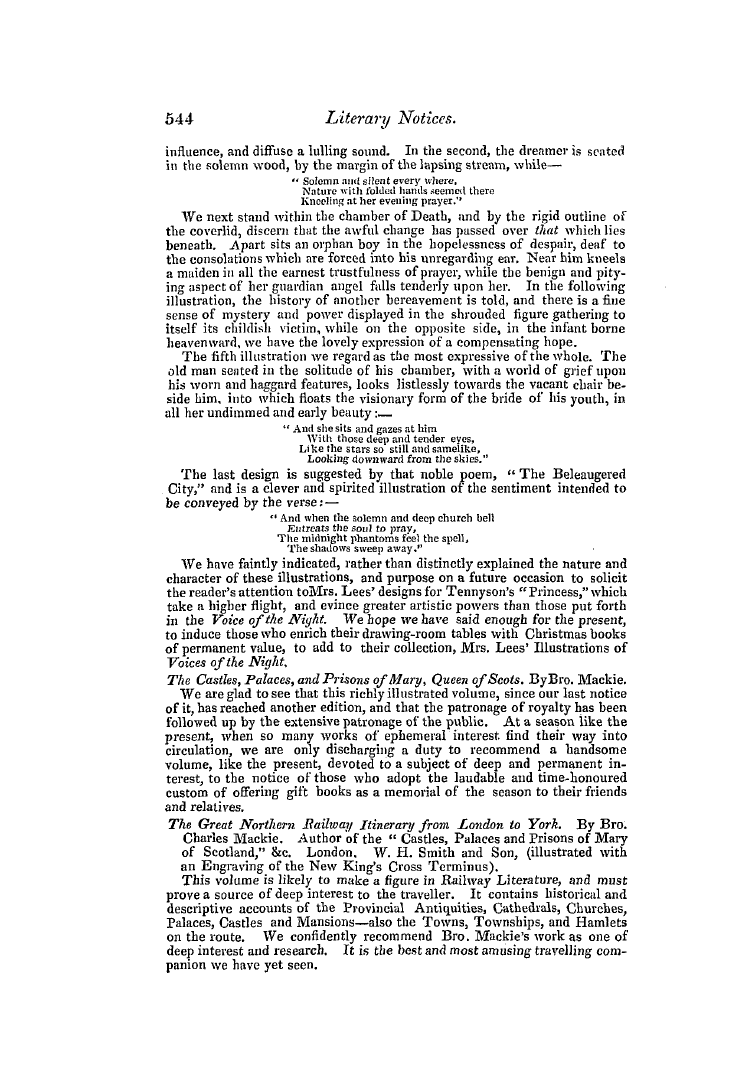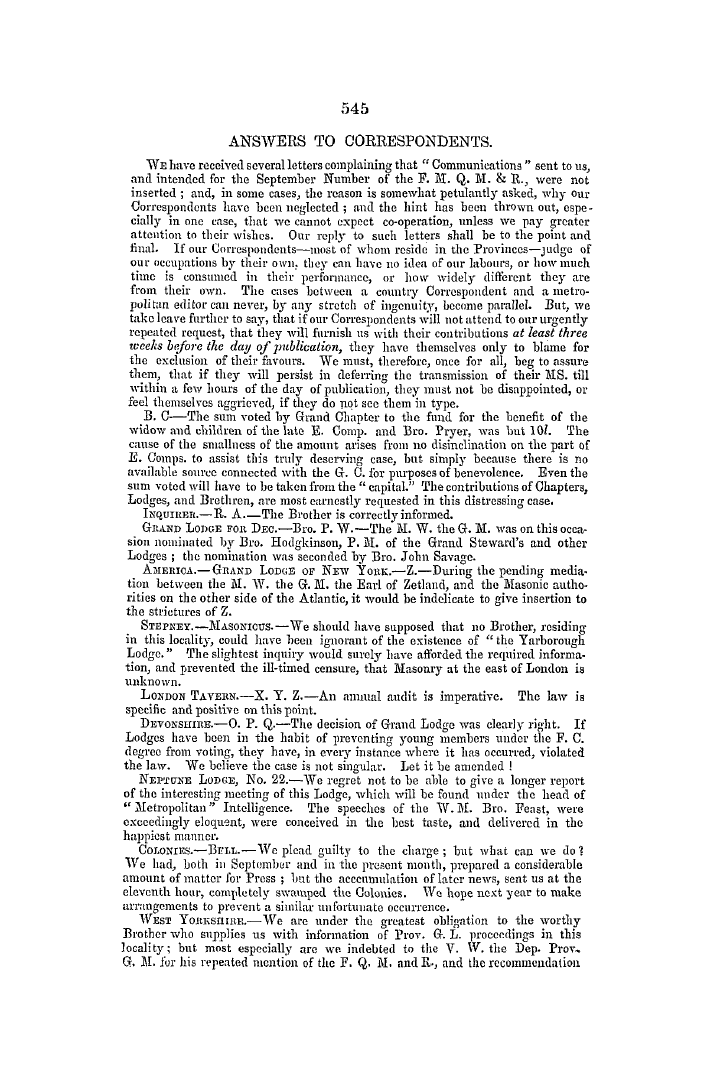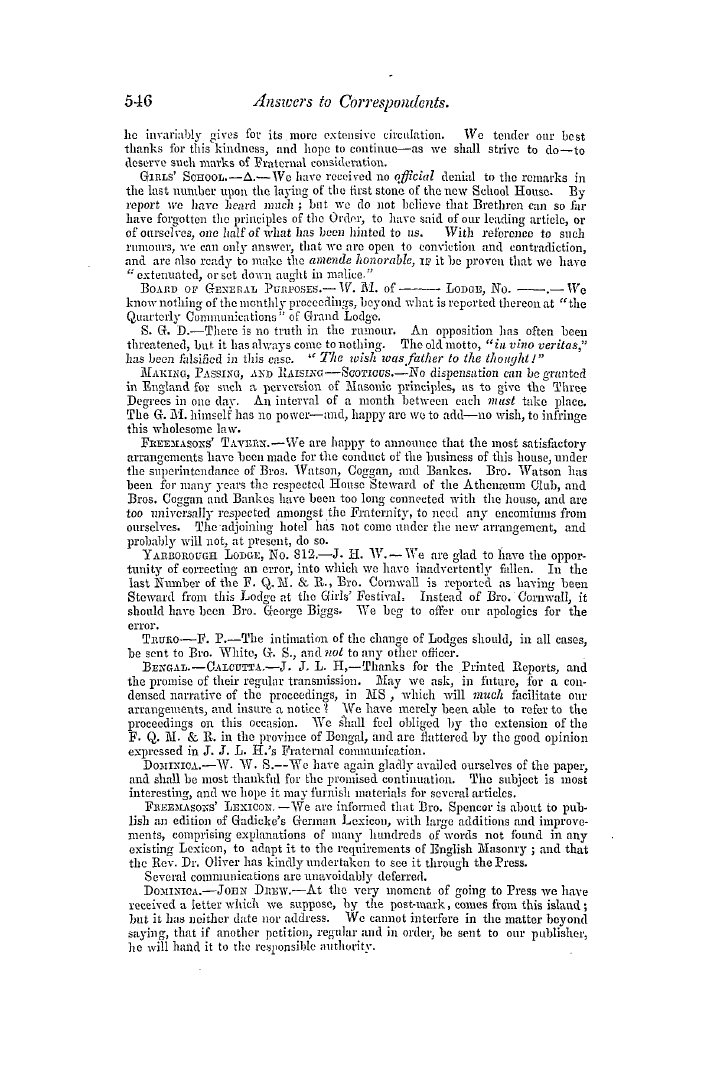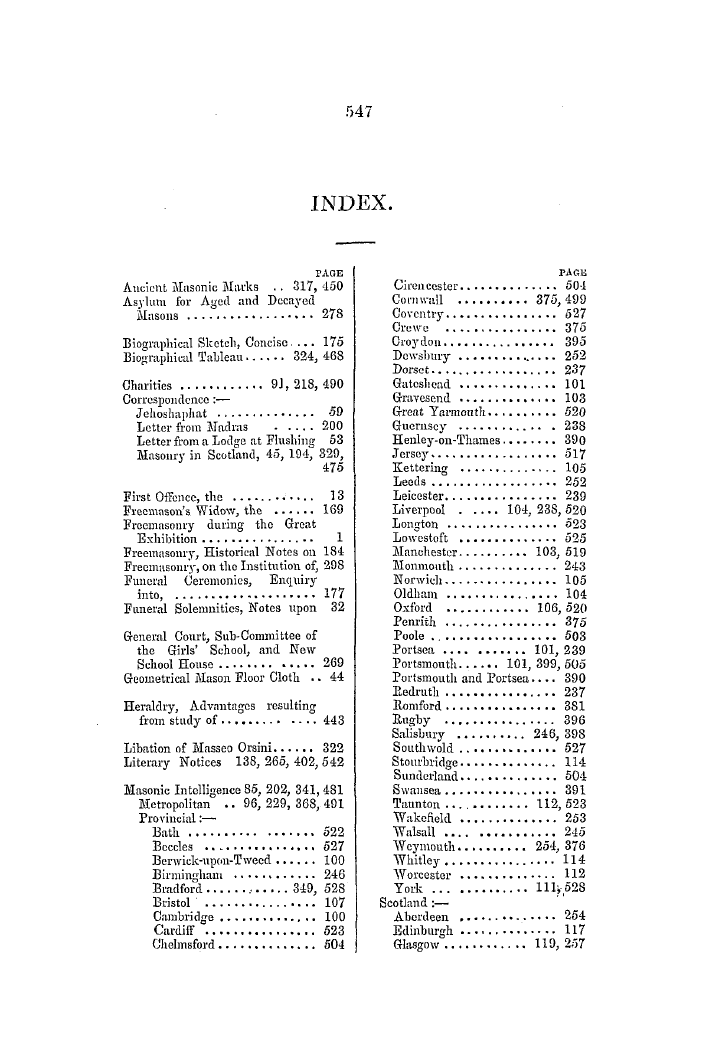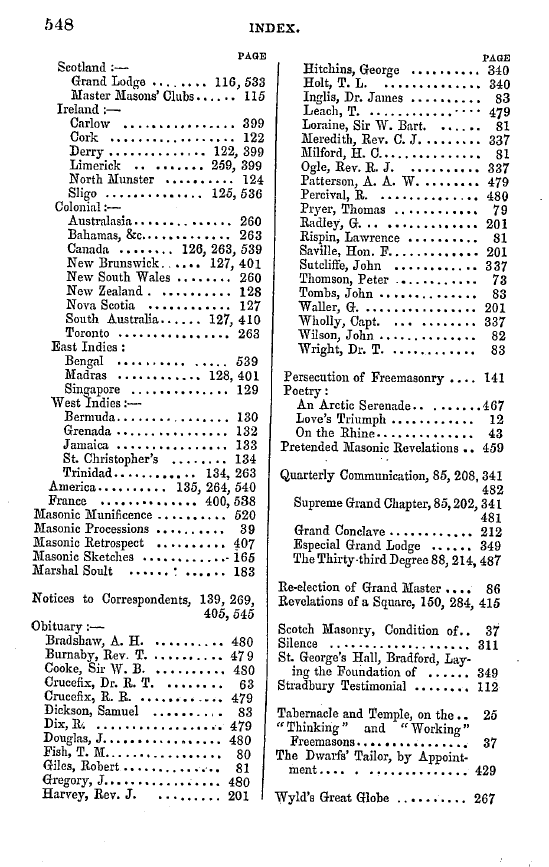-
Articles/Ads
Article PROVINCIAL. ← Page 33 of 34 →
Note: This text has been automatically extracted via Optical Character Recognition (OCR) software.
Provincial.
and prepared him for another and a better ; taught him to place his affections on things above , and instructed him so to pass through things temporal as finally not to lose the things that are eternal . Thus did Freemasonry give a direct negative to the infidel , and this without any reference to forms and modes of faith . But to the initiated it furnished a Series of evidences which silently appeared to establish the great general principles of reliionand pointed to that triumphant system
g , which had been the object of all preceding dispensations , anil which in his humble opinion must eventually become the sole religion of the human race , because it was the only one in which the all-absorbing point of salvation was clearly developed . Bro . Schofield then proceeded to explain the emblems which had been placed on the various articles of furniture . The component emblem comprised three or four fundamental principles of the Order . There was the point of dedication
within a circle and between two parallel lines , intimating to them the purity of mind and heart , and the undeviating , circumscribed conduct which ought always to be observed by free and accepted Masons . In all regularly well-formed Lodges there was a certain point within a centre , around ^ which , it was said , the genuine professor of the art could not err . This was bounded north and south by two parallel lines . In the upper or eastern perihery was laced the volume of the sacred law
p p . The point was emblematic of the omnipotent and omniscient Deity : the circle of his eternity ; and the parallel lines of his equal justice and mercy . It necessarily followed , that while traversing a Mason ' s Lodge , they must touch upon these two great parallel lines and the volume of the sacred law , and while a Mason thus kept himself circumscribed .
remembered his Creator , did justice and loved mercy , he might finally hope to arrive at that immortal centre from whence all goodness emanated . The equilateral triangle reminded them of the just and due proportion of harmony and truth which they ought to bear towards each other as Freemasons . The letter G denoted the Great Architect of the Universe , GOD , to whom they must bow with reverential fear and humility of heart . In His ineffable name were combined all the divine attributes , and it was placed in the centre to give them to understand
that every true Mason must have all these in the centre of his heart . The square and compasses were the inseparable associates of the volume of the sacred law in a Masons' Lodge . In the volume of the sacred law they were told that it was the unerring standard of truth and justice , and to regulate their lives and actions by the divine precepts contained therein , and that without a full knowledge and an acknowledgment of the truth contained in that sacred lawno one could
pene-, trate within the veil of the sanctuary . The holy writings of that book had God for their author , salvation for their end , and truth for their master . They also considered the Holy Bible and the square and compasses as emblematic of the wisdom , truth , and justice of the Most High . He thought the observations he had made , and the evidence before them , would constitute proof , if proof were needed , that Freemasonry was not devoid of a legitimate claim upon their opinion and that
of the public , as a science which taught human and divine knowledge as well as the practical duties incumbent upon them as Brethren , as members of civilized society , and as heads of domestic establishments . Bro . Schofield , in conclusion , observed that all religious and political controversy was excluded from their society , and that a member of any religious denomination mi ght enter one of their Lodges without the
Note: This text has been automatically extracted via Optical Character Recognition (OCR) software.
Provincial.
and prepared him for another and a better ; taught him to place his affections on things above , and instructed him so to pass through things temporal as finally not to lose the things that are eternal . Thus did Freemasonry give a direct negative to the infidel , and this without any reference to forms and modes of faith . But to the initiated it furnished a Series of evidences which silently appeared to establish the great general principles of reliionand pointed to that triumphant system
g , which had been the object of all preceding dispensations , anil which in his humble opinion must eventually become the sole religion of the human race , because it was the only one in which the all-absorbing point of salvation was clearly developed . Bro . Schofield then proceeded to explain the emblems which had been placed on the various articles of furniture . The component emblem comprised three or four fundamental principles of the Order . There was the point of dedication
within a circle and between two parallel lines , intimating to them the purity of mind and heart , and the undeviating , circumscribed conduct which ought always to be observed by free and accepted Masons . In all regularly well-formed Lodges there was a certain point within a centre , around ^ which , it was said , the genuine professor of the art could not err . This was bounded north and south by two parallel lines . In the upper or eastern perihery was laced the volume of the sacred law
p p . The point was emblematic of the omnipotent and omniscient Deity : the circle of his eternity ; and the parallel lines of his equal justice and mercy . It necessarily followed , that while traversing a Mason ' s Lodge , they must touch upon these two great parallel lines and the volume of the sacred law , and while a Mason thus kept himself circumscribed .
remembered his Creator , did justice and loved mercy , he might finally hope to arrive at that immortal centre from whence all goodness emanated . The equilateral triangle reminded them of the just and due proportion of harmony and truth which they ought to bear towards each other as Freemasons . The letter G denoted the Great Architect of the Universe , GOD , to whom they must bow with reverential fear and humility of heart . In His ineffable name were combined all the divine attributes , and it was placed in the centre to give them to understand
that every true Mason must have all these in the centre of his heart . The square and compasses were the inseparable associates of the volume of the sacred law in a Masons' Lodge . In the volume of the sacred law they were told that it was the unerring standard of truth and justice , and to regulate their lives and actions by the divine precepts contained therein , and that without a full knowledge and an acknowledgment of the truth contained in that sacred lawno one could
pene-, trate within the veil of the sanctuary . The holy writings of that book had God for their author , salvation for their end , and truth for their master . They also considered the Holy Bible and the square and compasses as emblematic of the wisdom , truth , and justice of the Most High . He thought the observations he had made , and the evidence before them , would constitute proof , if proof were needed , that Freemasonry was not devoid of a legitimate claim upon their opinion and that
of the public , as a science which taught human and divine knowledge as well as the practical duties incumbent upon them as Brethren , as members of civilized society , and as heads of domestic establishments . Bro . Schofield , in conclusion , observed that all religious and political controversy was excluded from their society , and that a member of any religious denomination mi ght enter one of their Lodges without the




























































